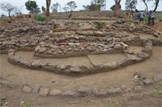
The Anthropology back door to the web: the DRC Blog, 2015
htmlized by Bernard CLIST
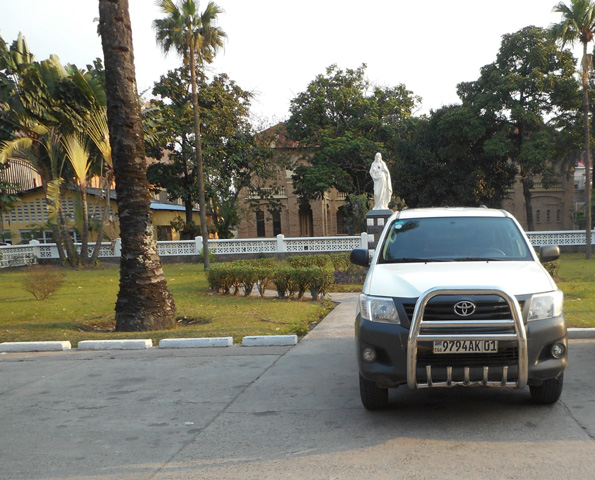
September 22, BC: Last picture of our Toyota Hilux, parked after a good washing on the
Procure Sainte Anne lot. After 3 months continuous use she will have a needed rest. Like
the members of the 2015 team: I am off to Belgium this evening, Blair Zaid back to the
States next Thursday, and Toon de Herdt on Friday to Belgium.
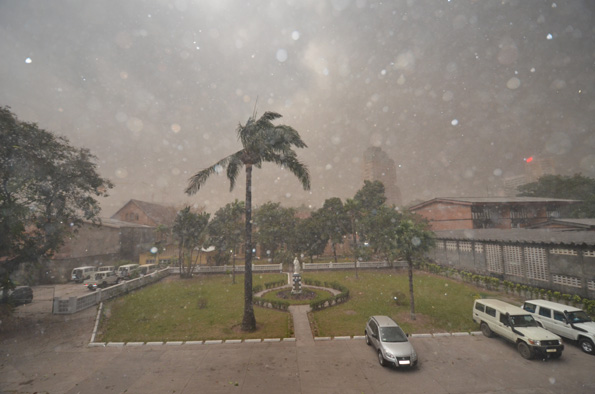
September 19, BC: First group with 50% of the field equipment back in Kinshasa on
Friday September 18.
Violent winds around 5 PM the following day on Kinshasa carrying dust which settled
everywhere and later rains. It was as if we were after 6 PM and at night for half an hour.
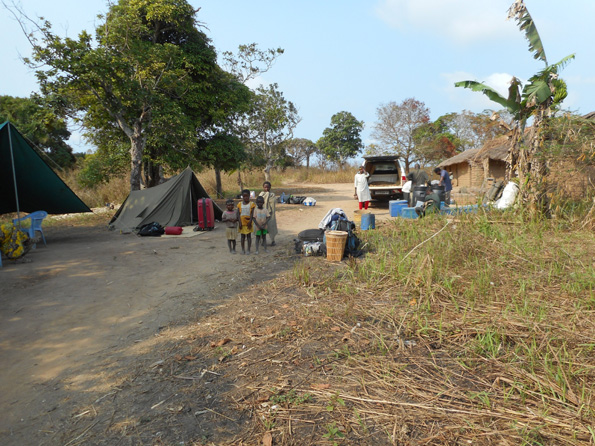
September 17, BC: Packing up the Ngongo Mbata base camp, ready to go down to
Kimpangu for the night before the first rotation to Kinshasa. The second group will come in
on Sunday September 20 with the rest of the equipment.
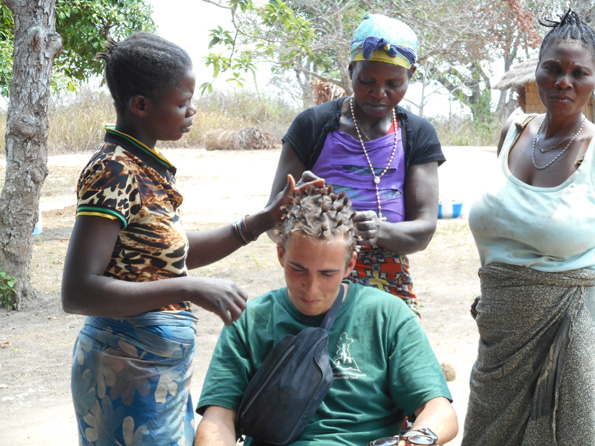
September 17, BC: Toon De Herdt from Belgium accepting the Ngongo Mbata KongoKing
tradition. Every year a man must abide to the Congolese hairdressers. In 2013 it was B. Clist,
and in 2014 it was Maarten Praet.
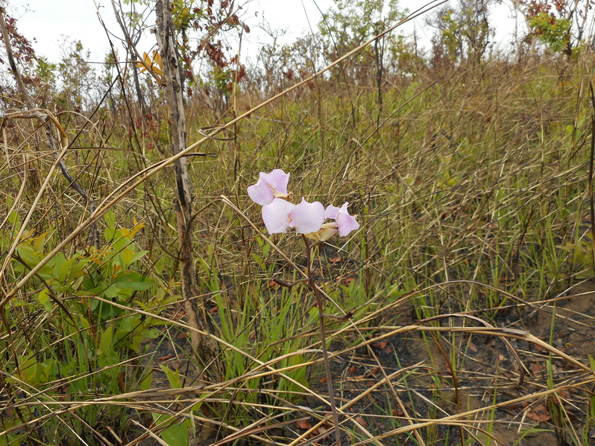
September 16, BC: The wooded savanna around Kingondo has a few orchids giving it dots
of colour in the monotonous yellow and green.
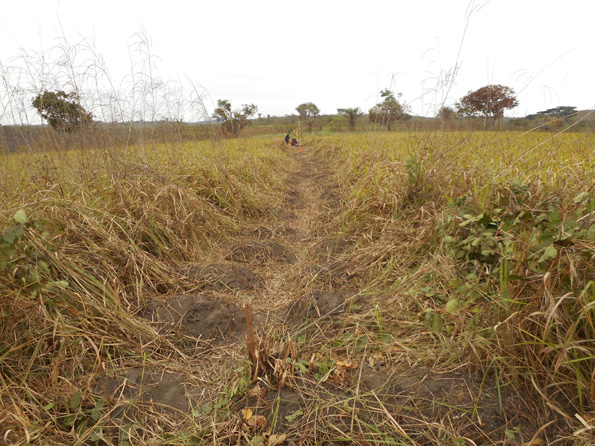
September 15 & 16, BC: Test excavations on Kingondo hilltop, where Mbanza Mbata
could have hid away. Negative results throughout the 12 trenches.
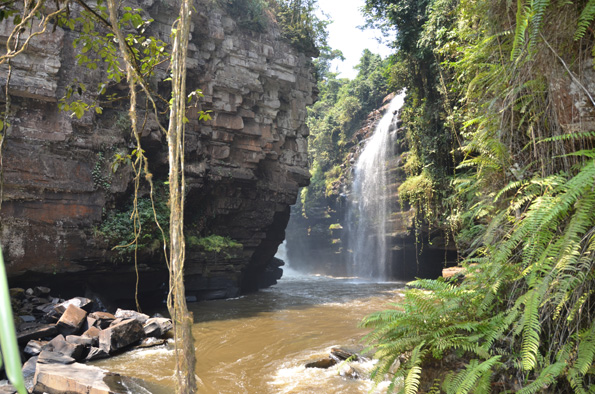
September 15, TdH & BZ: Surveying the shores of the Inkisi under Kingondo hilltop. A
few Stone Age and Iron Age hot spots on the slopes of the left bank.
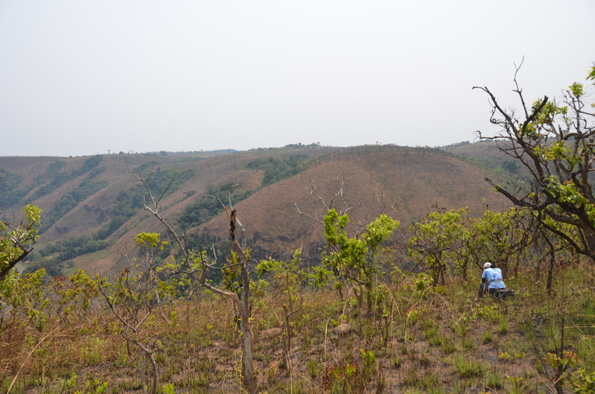
September 14, BC & BZ: Survey of the Kingondo 1 site where oral traditions locate the
earliest village in the area. The hilltop overlooks the Inkisi river, and is opposite Mbata
Kulunsi visible in the center of the picture.
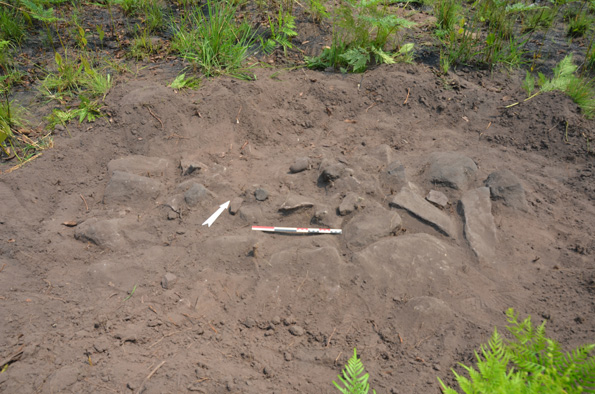
September 14, BC & BZ: Survey of the Kingondo 1 site. Discovery of an isolated tomb. It
is unknown from the local villagers, and the stratigraphy and stone structure indicates it is
similar to the Mbanza Nsundi cemetery excavated in 2012-2013.
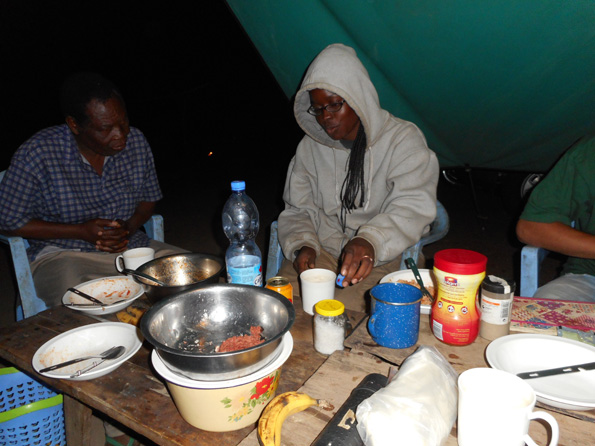
September 14, BZ: In the evening at the Ngongo Mbata base camp, B. Zaid explaining the
Solar system to A. Nkanza Lutayi. The Earth's moon is the blue cap she holds in her hand.
The various goblets and cans represent the Sun and its surrounding planets.
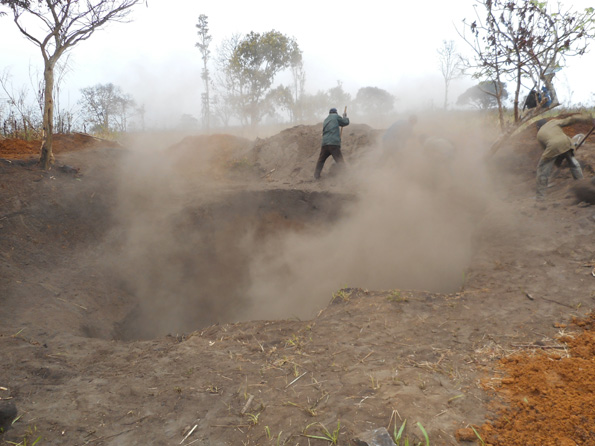
September 14, BC: Filling in Ngongo Mbata's trench 83 where the large pit we were
excavating since September 6 has been successfully fully studied.
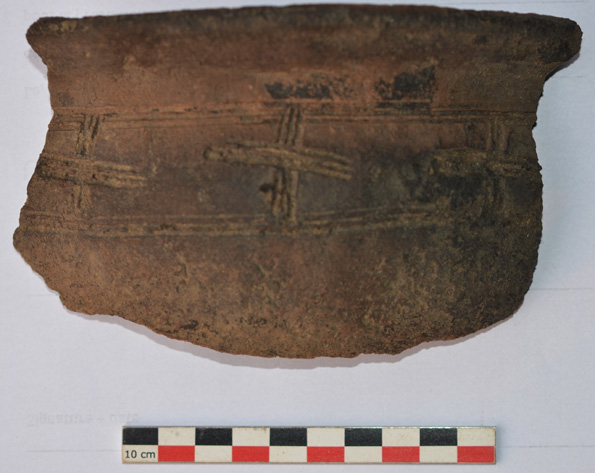
Ngongo Mbata: One of the potsherds from pit 1, trench 83, dated to AD 1660-1740. The
Christian cross ?
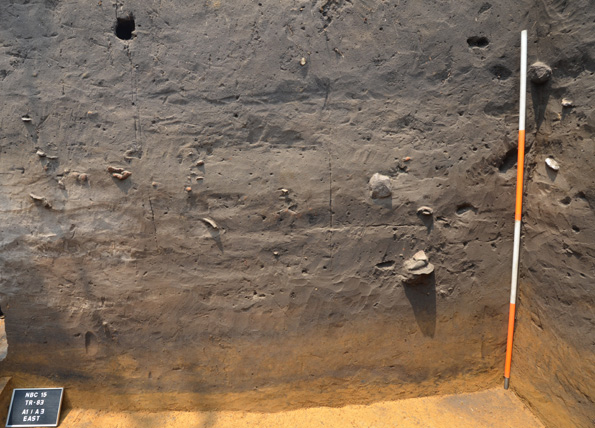
Ngongo Mbata: The east profile of pit 1, trench 83.
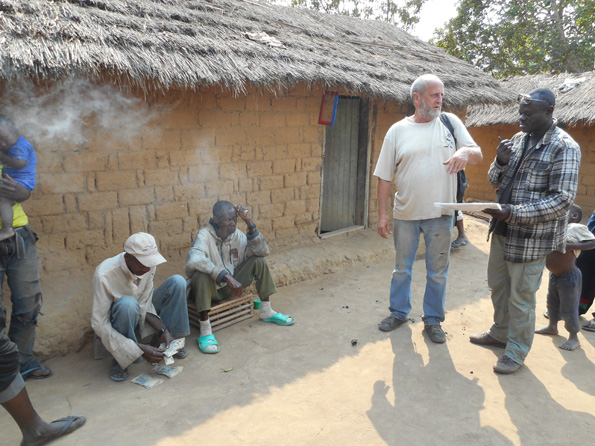
Kimfuti village. Meeting to pay out the "droit de passage" to be able to set up our test
trenches on the lands of the neighbouring Lemba village. A member of the family owning
the land counts the 'bongos', 35,000 of them.
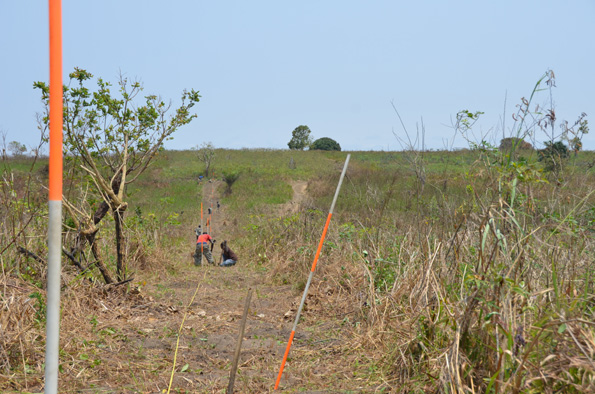
Between Ngongo Mbata, Kimfuti and Lemba villages. Test pits (15 of them) to check if the
16th-18th centuries Ngongo Mbata extended there. Negative answer.
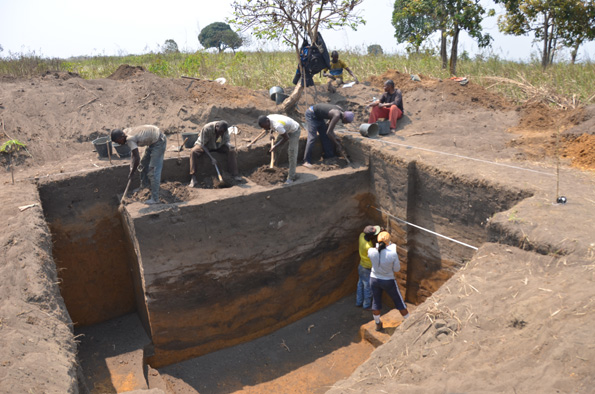
Ngongo Mbata, trench 83, pit 1. Ongoing excavation showing the filling layers, and the
exceptional size of the pit. The pit was excavated between September 6-14.
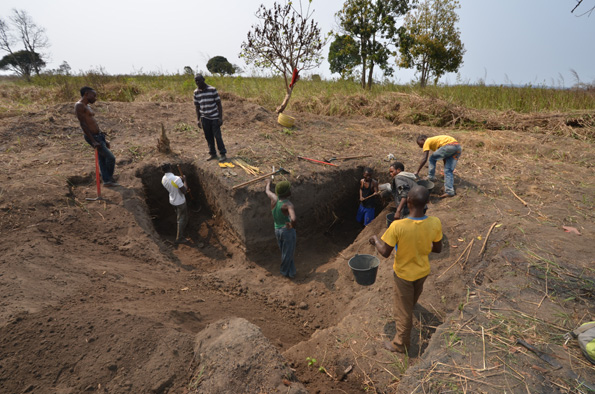
Ngongo Mbata, trench 83, pit 1. This pit had been left half excavated in 2014. Part of the
later pits on this exceptional site, it was decided to finish its study in 2015. Here, the workers
clean the area and inside last year's trench.
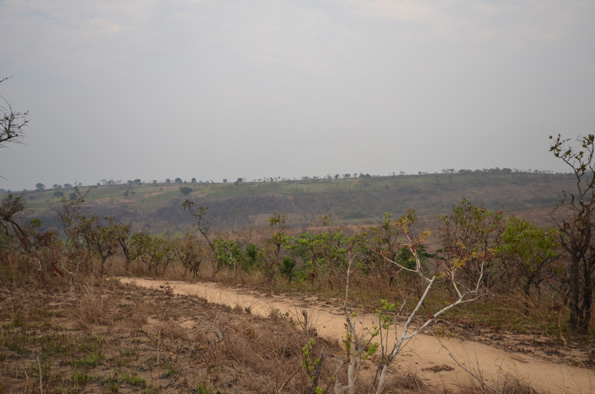
Nice view of Ngongo Mbata site in the distance looking from the north with the track
probably used during the 17th century to come up on the plateau walking from the plain to
Mbanza Mbata in the foreground.
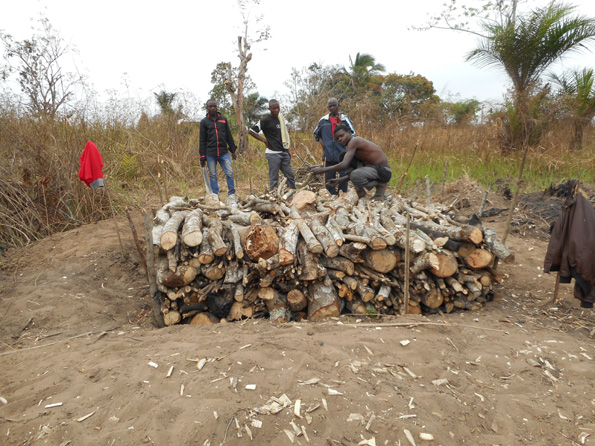
Lemba village near Ngongo Mbata. Finishing a charcoal furnace, last moments of setting up
the wood structure.
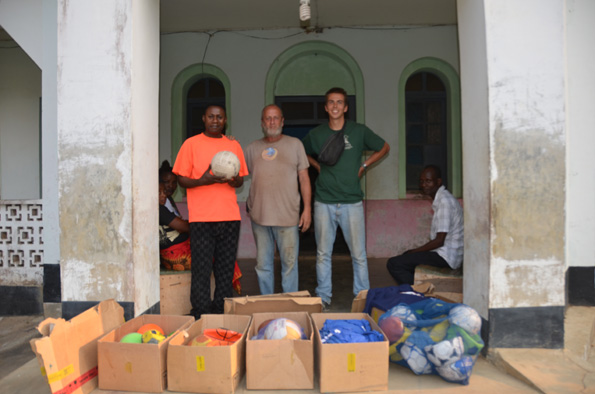
At the Kimpangu Catholic mission. Official handing over of sports gears (footballs,
basketballs, ...). The donation comes from the Supreme Headquarters Allied Powers Europe
(SHAPE) International School in Belgium, courtesy of the school's student association.
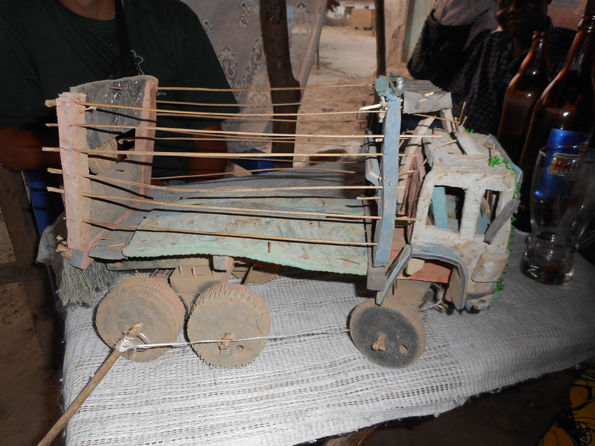
September 1, BC: Kimpangu, a kid's truck, entirely hand made.
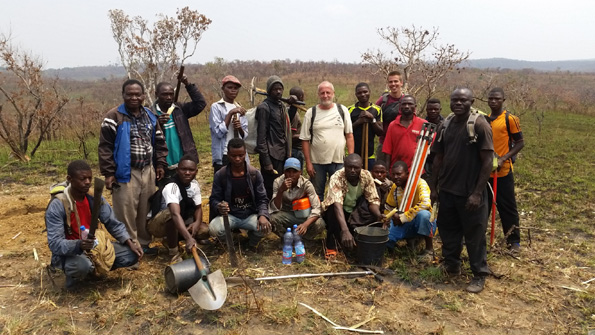
August 31, BC: Group picture. The excavation team at the Kinsazi site.
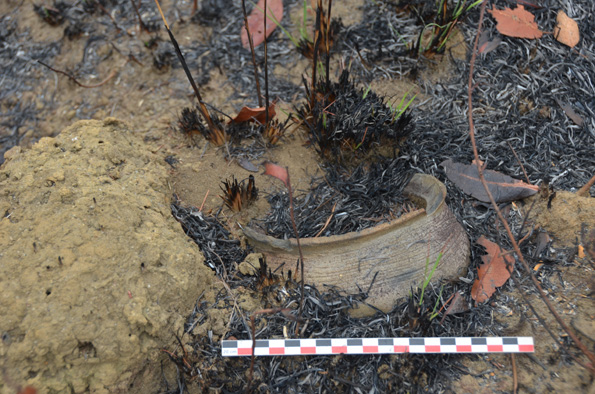
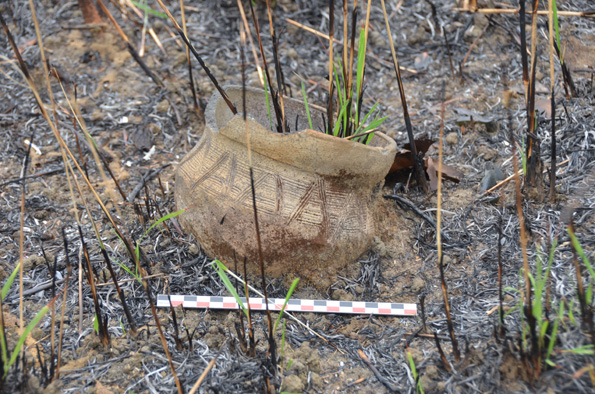
August 31, BC: Kinsazi "old" archaeological site. Near the Inkisi, on its west bank. Several
intact pots and hundreds of sherds found during the survey, illustrated here by two pictures.
Dating ? 19th - early 20th century century I'd say.
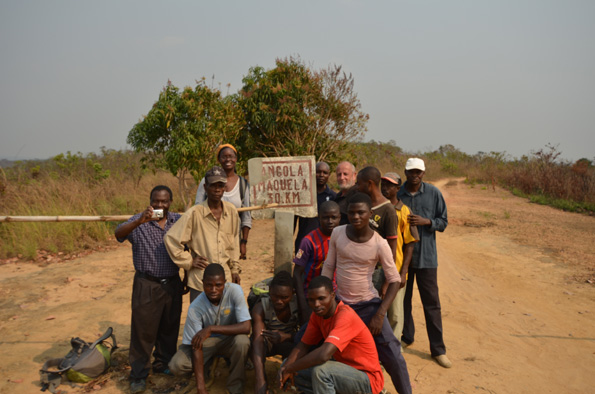
The border crossing between the DRC and Angola near the T16 hilltop. Going towards the
Angolan border post and its mine fields.
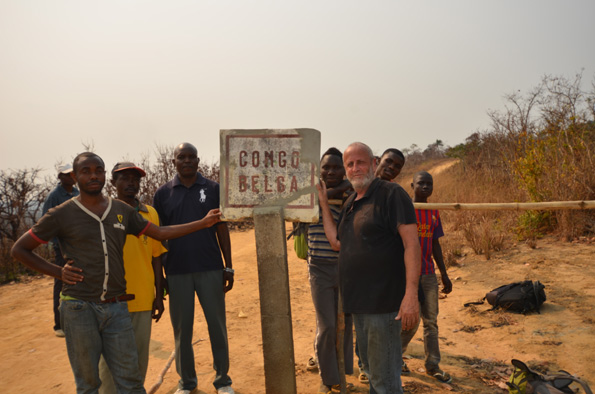
The border crossing between the DRC and Angola near the T16 hilltop. Going towards the
DRC.
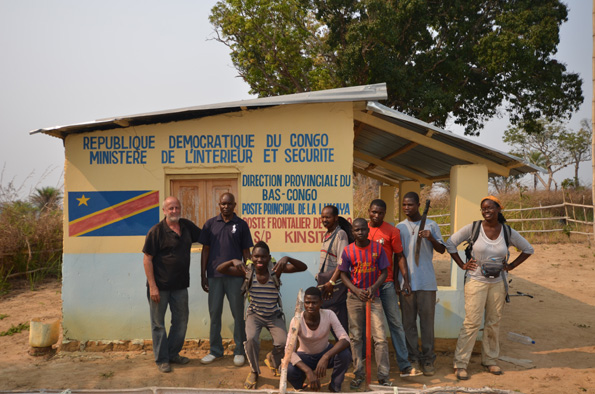
The Congolese border check point.
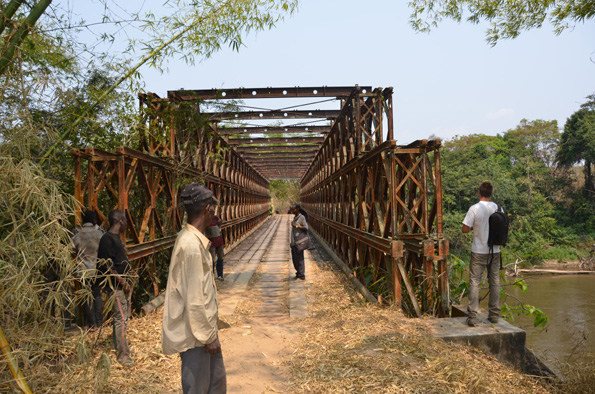
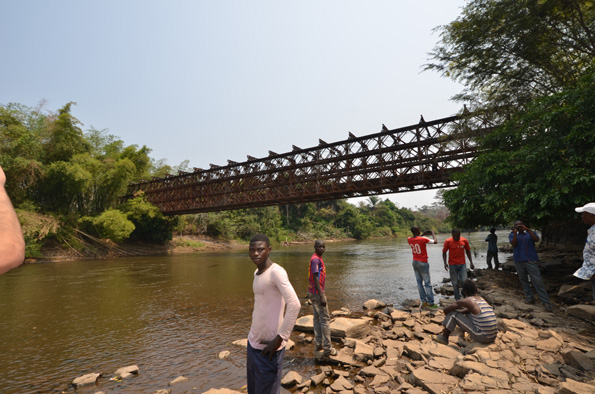
The "Belgian bridge" on the Inkisi river, built in 1952, near to T16.
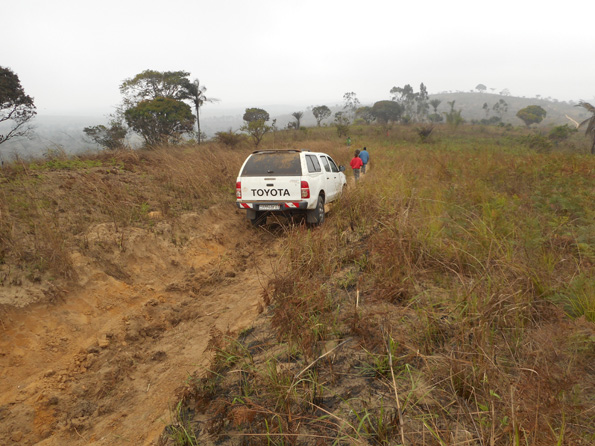
Surveying between the modern Mbanza Mbata and the Angolan border. Widening the track
in the sands to go through with the Toyota.
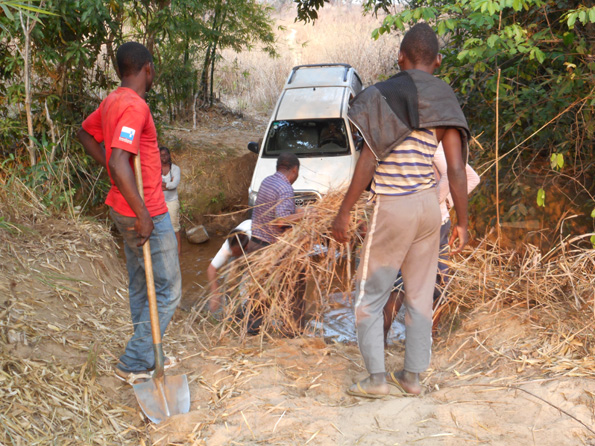
Thanks to two hours working on the river embankments, the Toyota can go through.
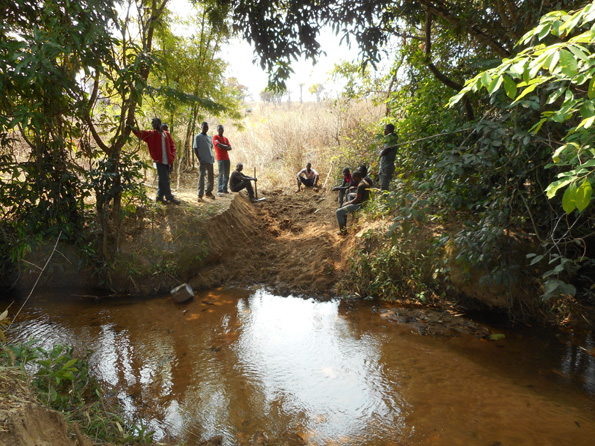
If you cannot use the bridge, go through the river but before hand some work to be done.
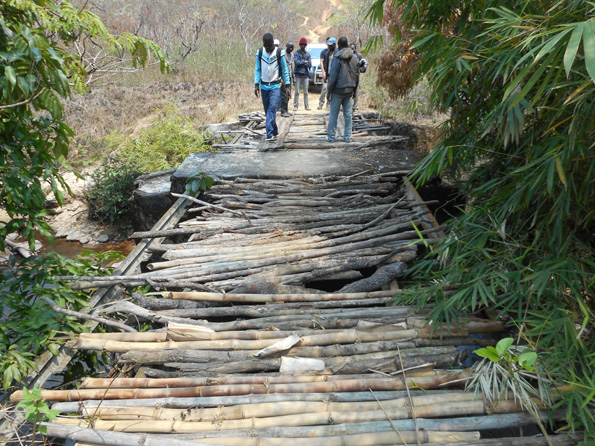
Sometimes a planned survey can turn heywire due to local situations. Here one of the two
bridges over the Luva river near the Angolan border one has to cross to reach T16 hilltop.
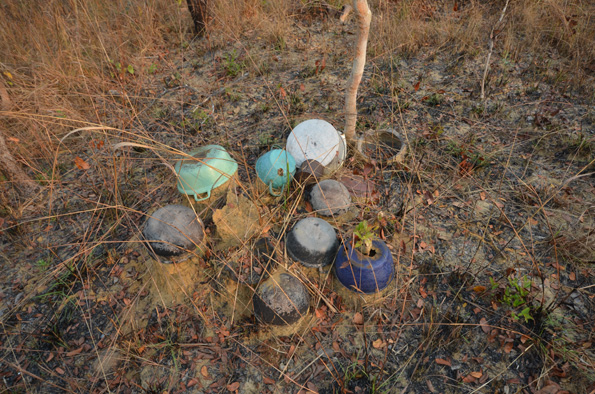
A recent tomb near Pangala village, probably 1930-1950, showing the simultaneous use of
metal and earthen pots.
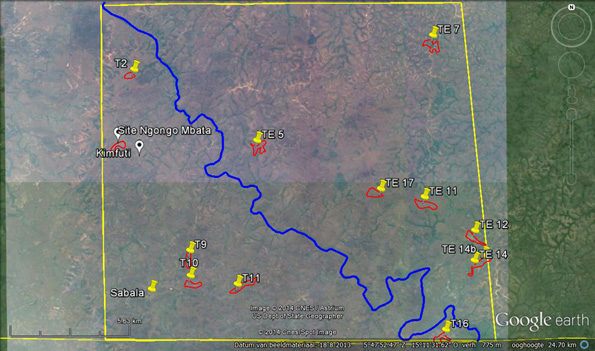
August 29 - September 4, BC: Several days of surveying, test augering, and test
excavations in the southern part of the Sabala plateau, around modern Mbanza Mbata and
east up the west bank of the Inkisi river (in blue). Sometimes 6 hours walks to survey
hilltops identified as potential archaeological sites where the old Mbanza Mbata could lie
hidden since centuries.
Ms. Eva Vergaert (Gent university, Belgium) drew for me from satellite pictures potential
sites to be investigated. Listed for the surveys west of the Inkisi river: T2 (and neighbouring
T1), T9 to T11, and T16 to the south-east a few hundred meters from the Angolan border
and its mine fields.
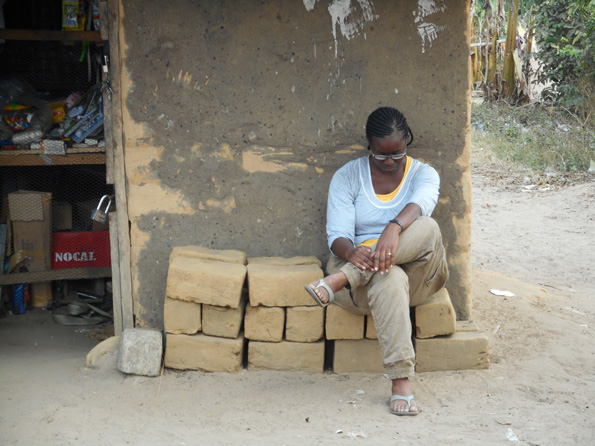
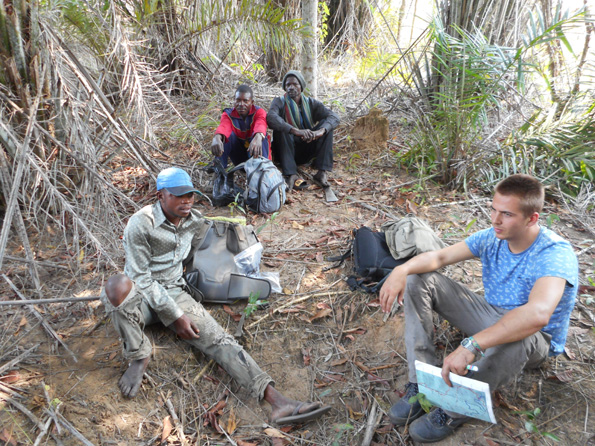
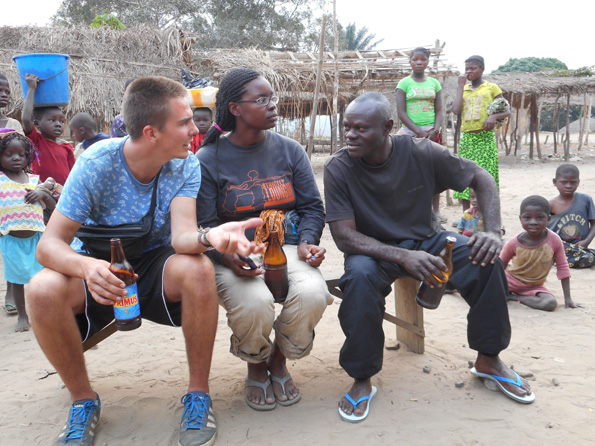
August 28-30, BC: The three following pictures show 1) Isidore, Toen and Blair at Sabala
village (a bier helps forgetting a difficult walk), 2) and 3) Ms B. Zaid and Mr T. De Herdt
taking a rest after an exhaustive survey.
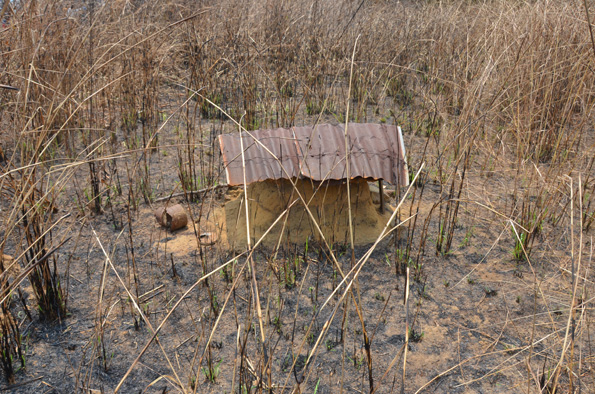
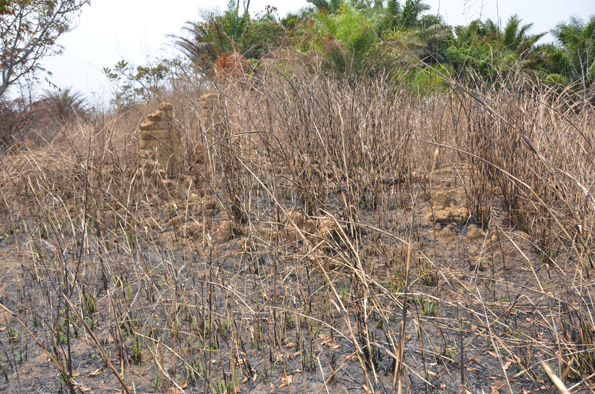
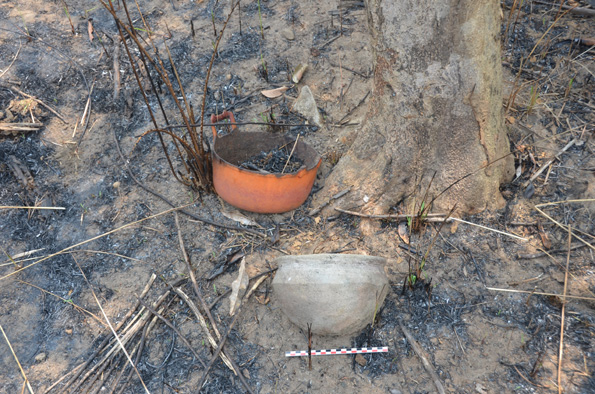
August 29, BC: Kinsazi village: three pictures showing the association of clay and metal
pots (first), a collapsed village house made of earthen bricks (second), and a family
protective shrine (third).
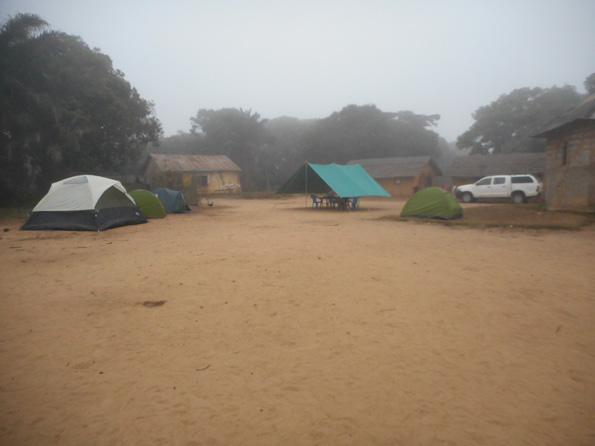
August 28, BC: The base camp at Ntadi-nia-Mbele village. From left to right: bedrooms of
the US, Congolese, Belgian, and French members of the team, followed by the living room,
a second Congolese bedroom, and behind the car the village house rented to stack all our
field equipment.
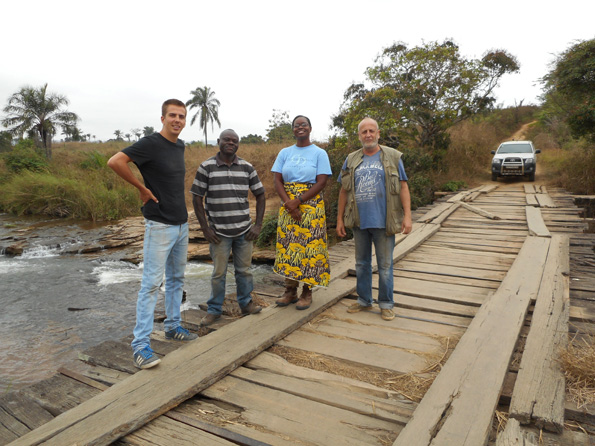
August 27, BC: The drive from Kimpangu towards the Sabala plateau. Picture taken on the
Lwidi river bridge. From left to right: Toon de Herdt, Isidore, Blair Zaid, and Bernard Clist.
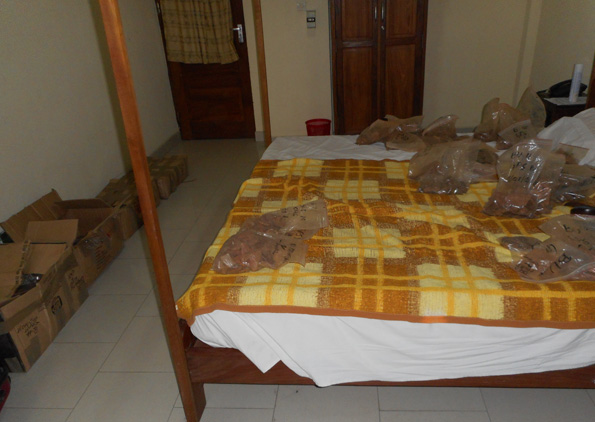
August 26, BC: Toon De Herdt (Belgian UGent MA student) should be boarding his SN
flight in Zaventem (Belgium), coming into Ndjili International Airport late in the afternoon,
Blair Zaid is improving her kikongo in Kimpangu, while I am finishing in Kinshasa the
listing of all the artefacts found during period 2 for the export permit (see picture). Our
Toyota should be out of the garage by midday, meaning an early departure for Kimpangu
tomorrow perhaps at 7 AM to rejoin Blair. Ah ! Yes, we will do the taxi between Kwilu
Gongo and Kimpangu as we are picking up there the new Kimpangu "abbé" who is posted
there; our friend Jean-Pierre who was acting for the last few years in Kimpangu is moving to
Kimpese.
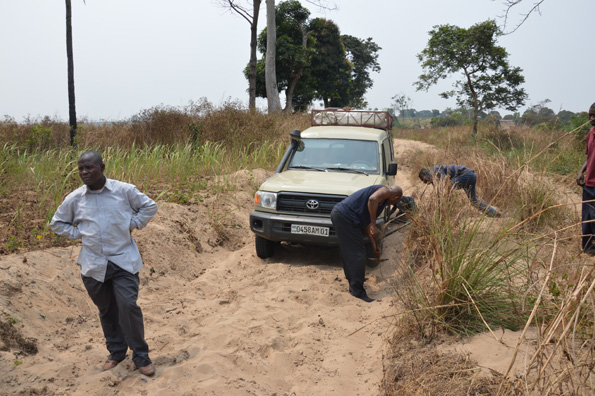
August, MK: How we can be stuck in the sand in some areas of Kongo Central [this should
be east of the Inkisi towards the Angolan border]
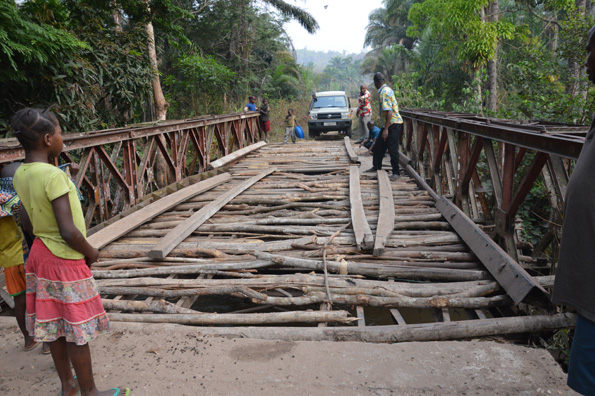
August, MK: We must be careful and check ourselves each important river crossing, and
sometimes having to waste a couple of hours strengthening a bridge [this should be in the
Mayombe mountain near Tshela].
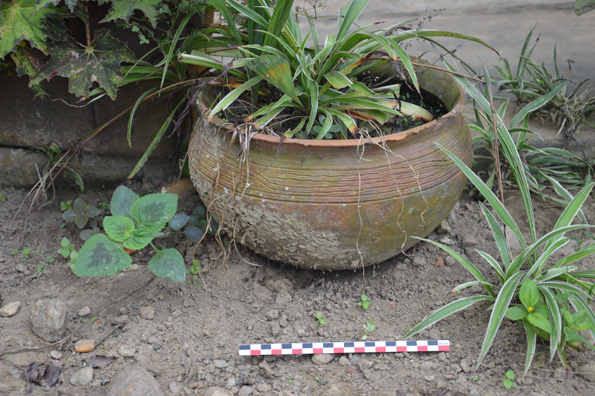
August, MK: Re-enacting ancient techniques for pot-making is an important part of the
questionnaire and of the recordings : a recent pot still in use.
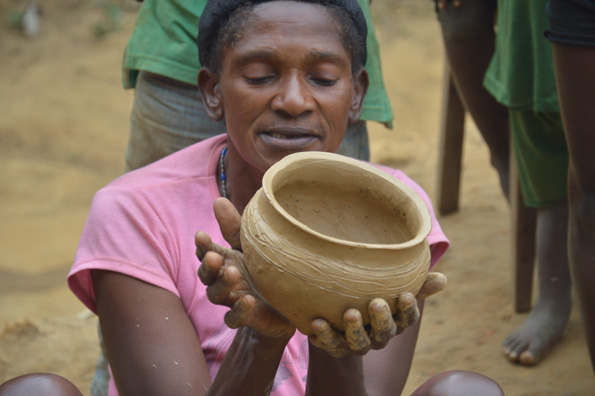
August, MK: Re-enacting ancient techniques for pot-making is an important part of the
questionnaire and of the recordings : nicely done pot of the same type.
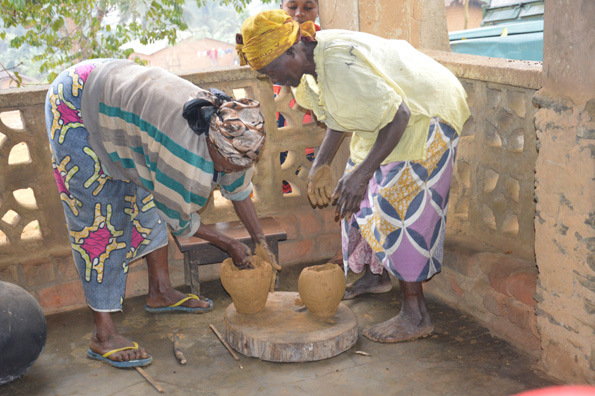
August, MK: Re-enacting ancient techniques for pot-making is an important part of the
questionnaire and of the recordings : two old potters showing their old techniques outside
of their village environment.
July-August, MK: Ms. Mandela Kaumba is one of our PhD students. Since late in 2012 she
has been looking into traditional pottery making in Kongo Central province (ex-Bas-Congo).
Though not much remains of the craft, most of the ancient potters have died, this is
important work to be carried out to register and archive what is left. While she is currently
in northern Angola (Zaïre and Uige provinces), she was able to send me yesterday the
following pictures of her fieldwork she will comment later on.
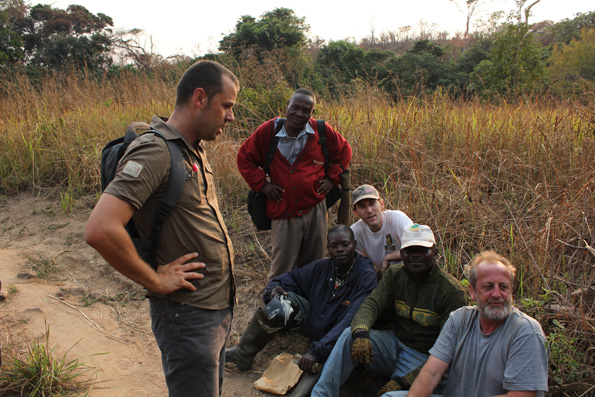
2012 in memoriam, BC Having a few days to spare before inserting myself into our Sabala
plateau base camps, I fished out from my archive this picture taken during the summer of
2012 showing, at the Malau liana bridge on the Inkisi east of Ngongo Mbata, the highest
density of PhDs from Ghent University.
Chatting on a few square meters, from left to right: standing, Dr. Koen Bostoen and Mr.
Alphonse Nkanza Lutayi (Congo National Institute of Museums), sitting, motorbike driver 1,
Dr. Gilles-Maurice de Schryver, motorbike driver 2, Dr. Bernard Clist.
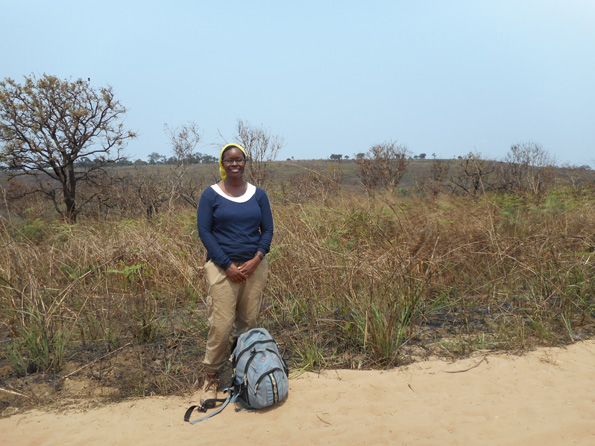
August 22, BC: PhD student Blair Zaid standing at Sabala village with the modern Mbanza
Mbata hilltop in the background. The Toyota came through all right !
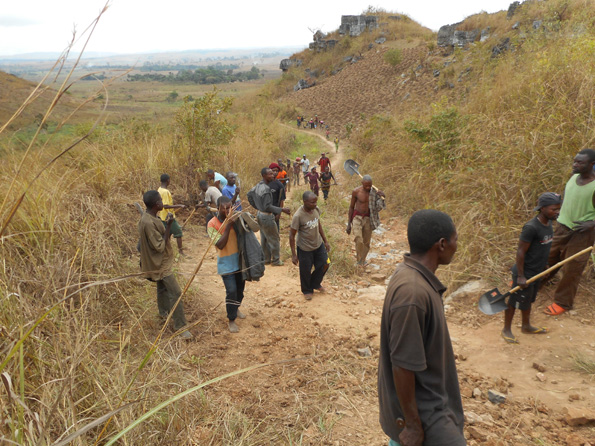
August 22, BC: Third day of work on the track going up from the Kimpangu valley to the
Sabala plateau where Ngongo Mbata and Mbanza Mbara are. They also have been on it last
Wednesday and Saturday. Fifty-eight villagers, men and women, working at it to enable our
Toyota to drive through.
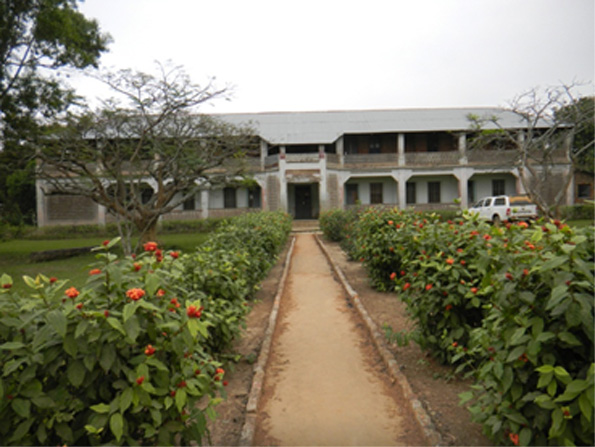
August 21, BC: The Kimpangu Catholic mission building where the bedrooms are located.
We reached Kimpangu yesterday August 20 around 10 PM. Should have been by 8 PM but
the gasoil injection system (I am not a mechanic) again gave us some trouble on the way. I
will have to go back to the Kinshasa garage before Belgian MA student Toon De Herdt flies
in on August 26. From Kimpangu, twelve hours driving to and from Kinshasa. Great, I am
very happy !
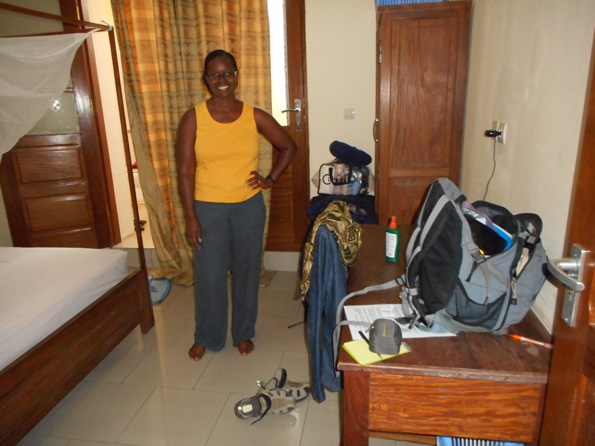
August 18, BC: Ms Blair Zaid from Michigan State University has arrived in the Congo to
join the KongoKing team. This PhD student will probably develop a project in connection
with the latest results of this year's fieldwork on the Sabala plateau east of Kimpangu. She is
staying with us up to September 24.
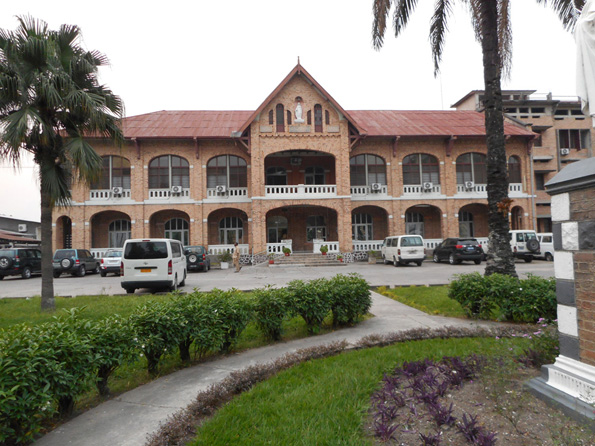
August 16, BC: Arrival in Kinshasa at the Procure Sainte Anne. Two days and a half of
hearing the driver his head over the engine: "pompez" (activate the gasoil pump), "gazez"
(push the engine revs up), "pompez", "gazez", every hour or so ...
And now, showers, air conditioning, a true bed ... for three days. Wonderful !
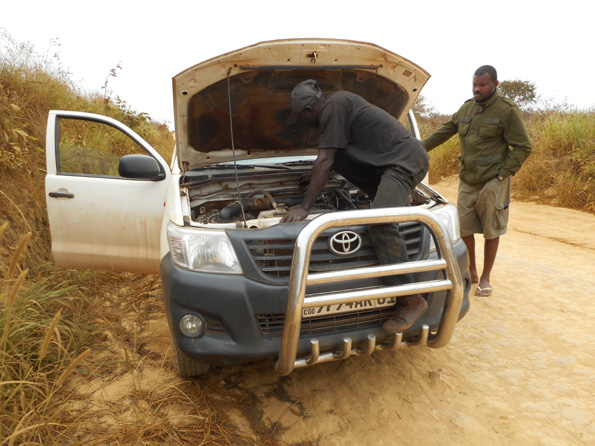
August 15-16, BC: From Matadi to Kinshasa. For various reasons, we could only leave
Matadi before 11 AM on the 15th. Since Tshela we had engine problems because of low
quality gasoil bought in Seke Banza. We slept on the 15th in Kwilu Gongo ("la sucrière")
before reaching Kinshasa around 3 PM today ! From Mbanza Ngungu to Kinshasa no engine
problem at all ... (last 160 km). Tomorrow and possibly Tuesday: garage, change of the
gasoil filter, and some other things on the vehicle. Wednesday: last shopping for the last
month of fieldwork. Thursday: departure for Kimpangu on the Angolan border. Title of the
last chapter: "looking for (and finding) Mbanza Mbata".
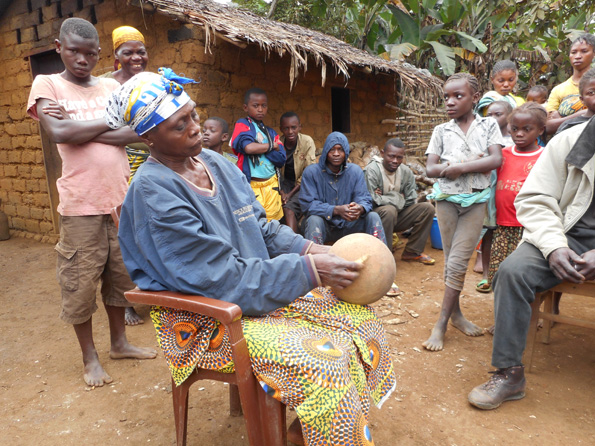
August 14, BC: In the morning visit to Benza Moanda village to interview a former potter
(see picture). The woman was trained to the craft near Tshela before moving to Benza
Moanda after her mariage; she is re-enacting her work for us using an old pot. According to
the village elders the last potter from Benza Moanda died around 1968.
Late morning, packing, and at 1 PM start of the move towards Kinshasa: Tshela, Lukula,
and Matadi where we bunked at 11 PM at the 'Frères des écoles chrétiennes' compound.
Woaw ! Cold water SHOWERS !
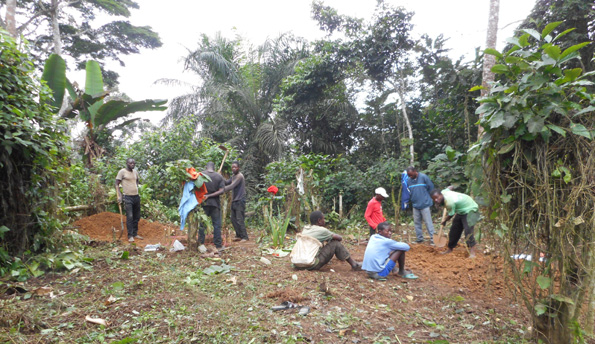
August 13, BC: Test excavations on a hilltop west of Sumbi, above Benza Moanda village
(continued). Here trenches 6 and 7 being excavated. Some evidence of Late Iron Age
settlement and the 'laterite' showing up under 60 cm.
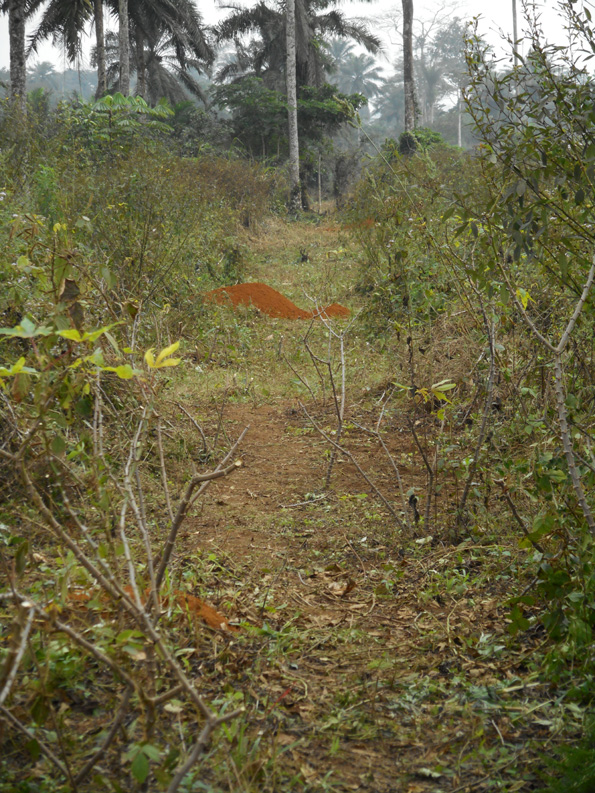
August 13, BC: Test excavations on a hilltop west of Sumbi, above Benza Moanda village.
Part of the layon cleared of vegetation at the top of the hill into which five one meter square
trenches were dug (trenches 1 to 5). Another two (6 and 7) were excavated on the hilltop's
south-western limit (see picture above), and the last three (8-10) lower down on the
north-east side. In 1951, Maurits Bequaert excavated "west of Sumbi, on the top of hill". A
rich collection of Kay Ladio Group material and several Late Iron Age components were
found. Sadly, no precise position for this hill was archived at the Tervuren Musem in
Belgium. After interviewing the oldest people in the villages west of Sumbi, we did not get
any good feedback. It was thus decided to try the first major hill west of Sumbi; nothing was
found similar to the 1951 fieldwork.
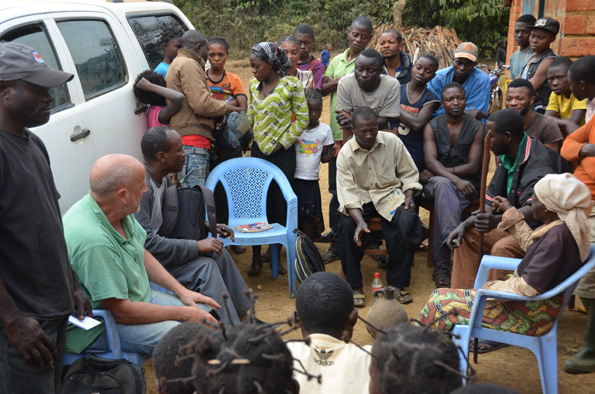
August 12, BC: Visit to Benza Moanda village in the morning to get authorization to work
on a nearby hilltop, and in the afternoon visit of villages north of Sumbi, especially Kangu
Masua. There, two old potters were interviewed to better understand the local craft (see
picture). It seems pottery making stopped in the 1990s.
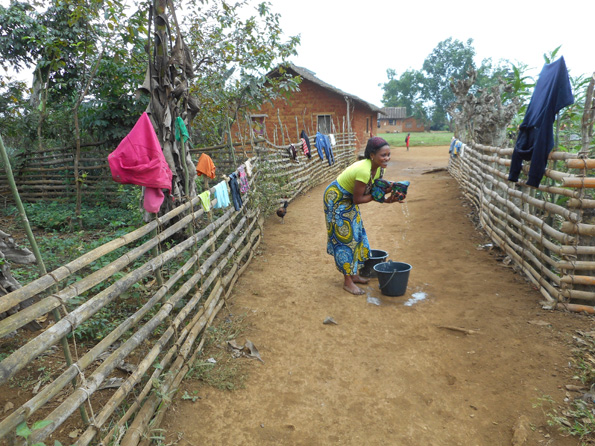
August 12, BC: Our washing and drying machines at our Sumbi base camp [:-))]. Pauline
also acted as our cook.
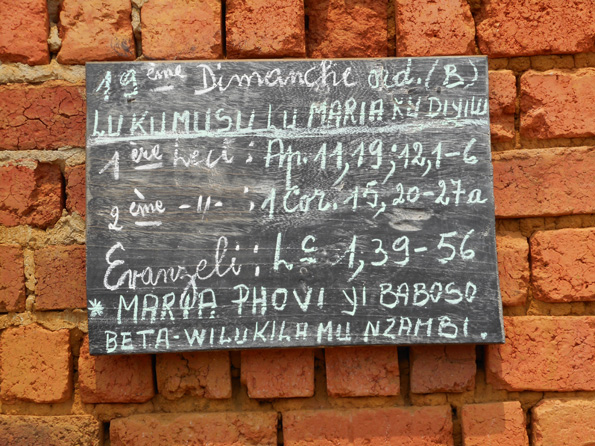
August 12, BC: Information on the Sumbi church activities.
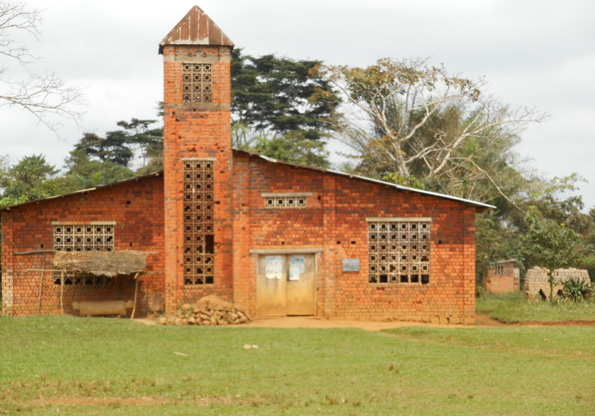
August 12, BC: The Sumbi catholic church. Note the traditional telephone under the shack
on the left of the entrance (every village in the Mayombe still has one), and the brick kiln on
the right and in the background.
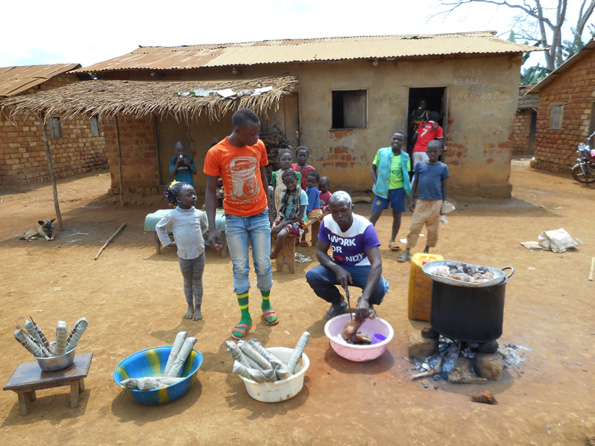
August 12, BC: The local Sumbi butcher shop, as usual in the open air. The guy had
recently killed a pig, and I had payed for 1 kg of fresh meat. 'Chickwangue' on the left, in the
3 plastic basins.
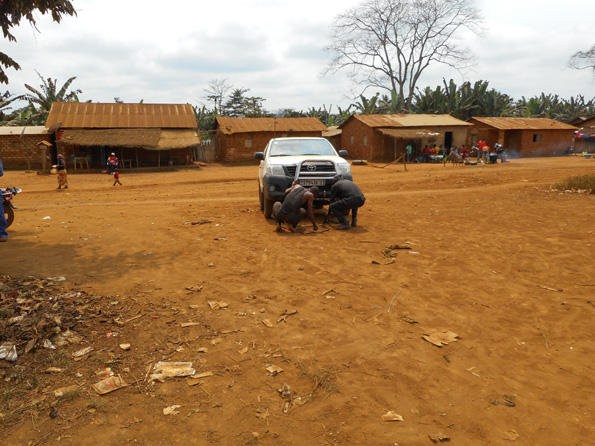
August 12, BC: Fixing the armour plate under the Toyota at the open air garage on the
Sumbi main street. Going to Seke Banza did slightly loosen it up (... !!).
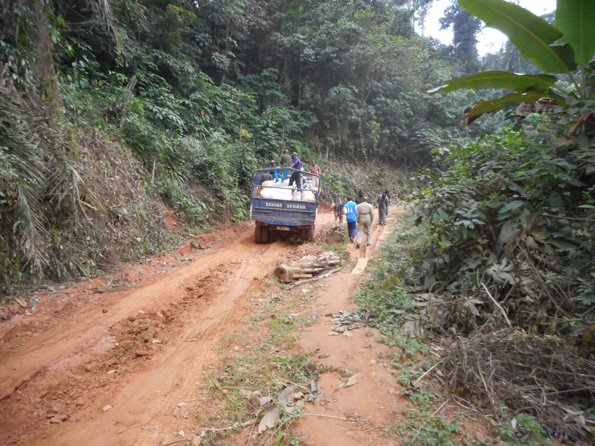
August 11, BC: On the road to Seke Banza. Arriving on August 10, we had to have signed
our "ordre de mission" by the local "chef de secteur". Not at all convinced we were
archaeologists but instead engineers looking for minerals, he asked us to go to the "attaché
de terrtoire" in Seke Banza. Only 80 km away ... using a dirt road (see picture) on which a
mean speed of 23 km per hour is standard. This meant an 8 hours return trip (departure
1 PM, coming back in Sumbi at 11 PM).
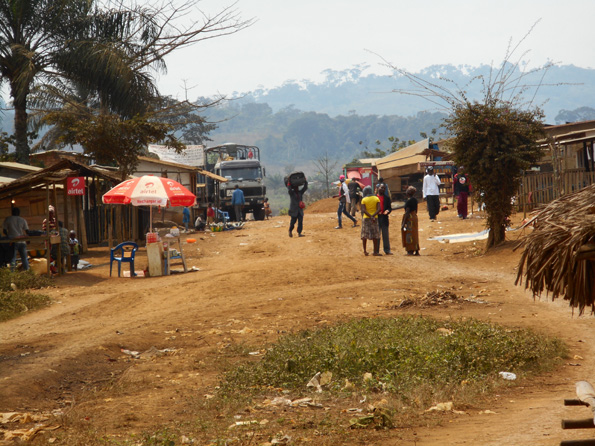
August 11, BC: Sumbi village, the main road and commercial center. We are here a short
distance from the Congo Republic border to the north.
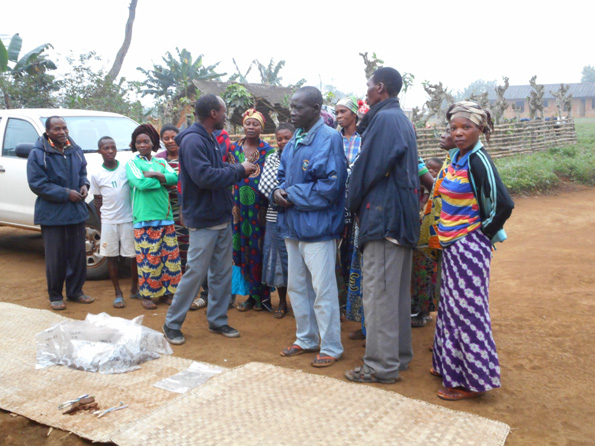
August 11, BC: Before moving to the first hilltop to be surveyed, we are setting up our
washing lab in Sumbi (last day's excavation artefacts at Kindu 2 still not cleaned). People
out of the church come to listen to Roger from the National Institute of Museums explaining
archaeology and museum collections curation objectives.
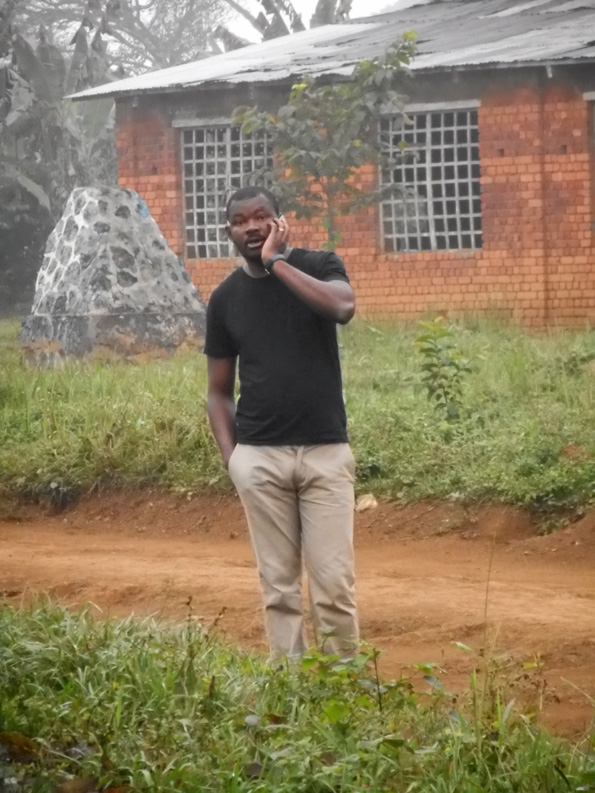
August 11, BC: Igor Matonda, one of the project's PhD students, in full work mode:
telephone to Kinshasa ... (recently married last June, so ...).
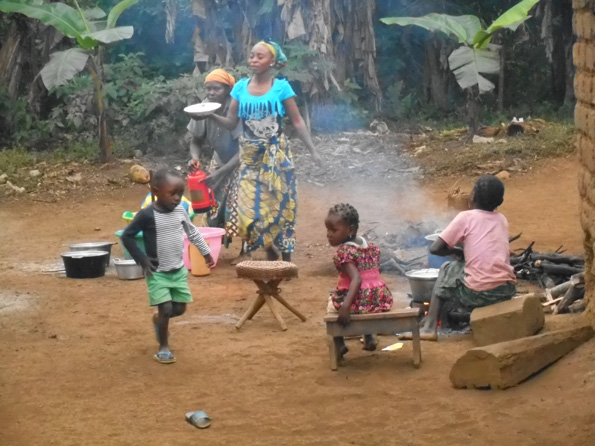
August 10, BC: At Sumbi, part of our local cooking staff with their advisers working in the
kitchen.
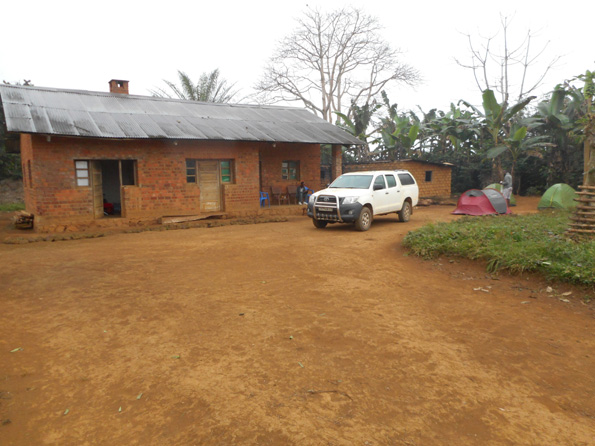
August 10, BC: Sumbi, the base camp at the catholic priest compound with his pigs,
poultry, and family (2 boys and 6 girls).
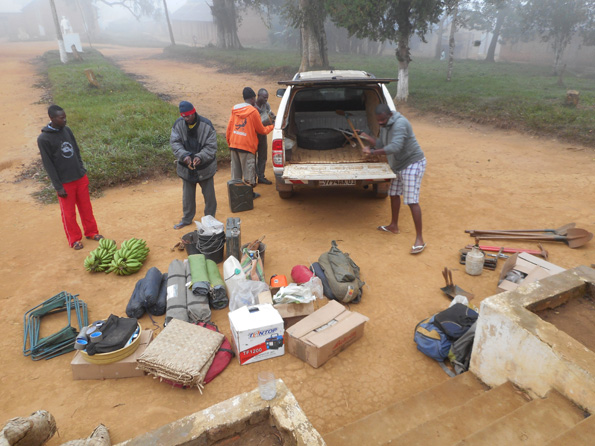
August 10, BC: On the move to Sumbi some 50 km to the west, another hilltop excavated
by M. Bequaert in 1951. Loading the field equipment (camping and excavation), bananas,
and filling up the tank.
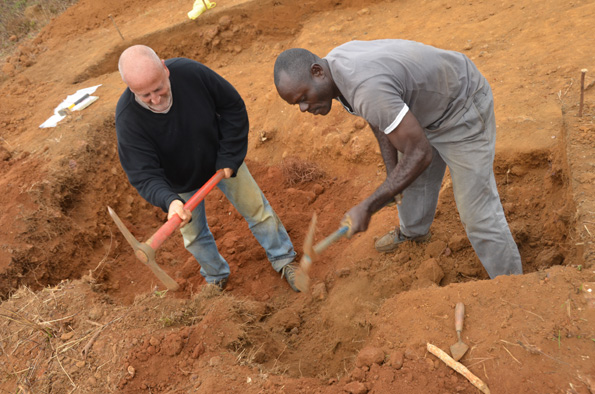
August 9, BC: Last minutes of excavation on the last day. We HAVE to move to Sumbi the
next day, thus the very delicate way removing the last Kay Ladio sherds (without breaking
any ! Those guys are experts ...).
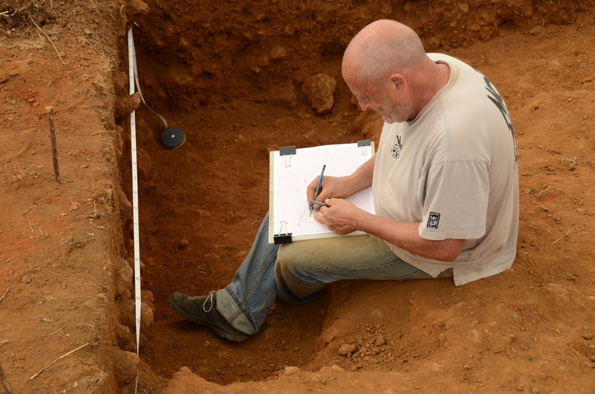
August 9, BC: Drawing the west profile of pit 1, trench 9.
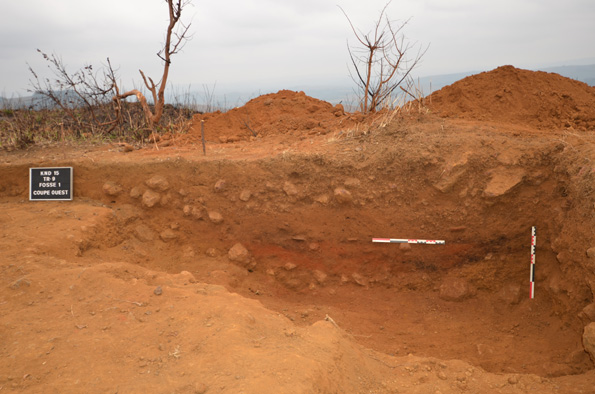
August 9, BC: Last day of excavation, pit 1 of trench 9, its west profile.
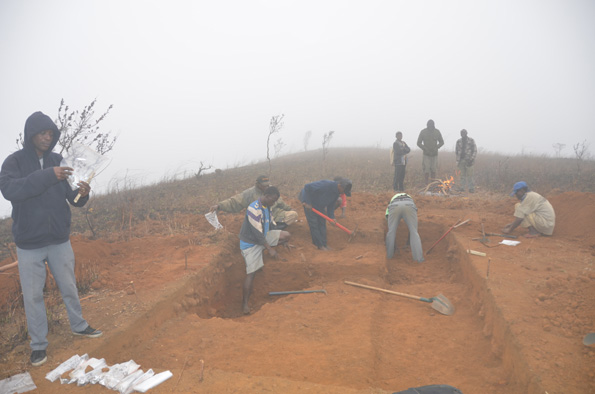
August 9, BC: Last day of excavation, hurrying around at 8 AM in the mist (bottom of a
Stratus cloud hanging on to the hilltop) and cold created by a nice south-westerly wind. The
crew has got to warm itself up taking turns at a fire nearby.
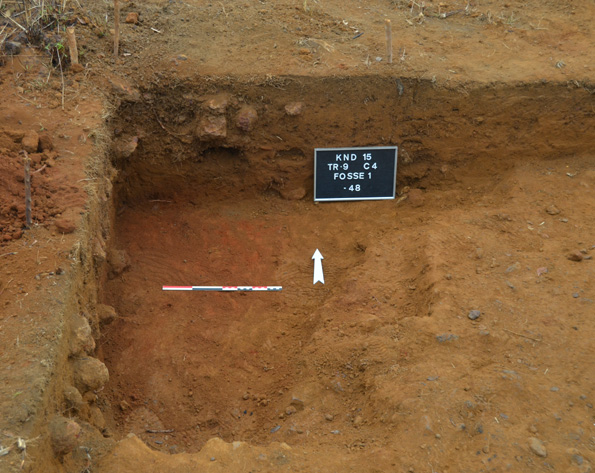
August 9, BC: View of the Kay Ladio Group pit at -50 cm. Bottom found at -80 cm.

August 9, BC: General view from Kindu 2 hilltop looking west.
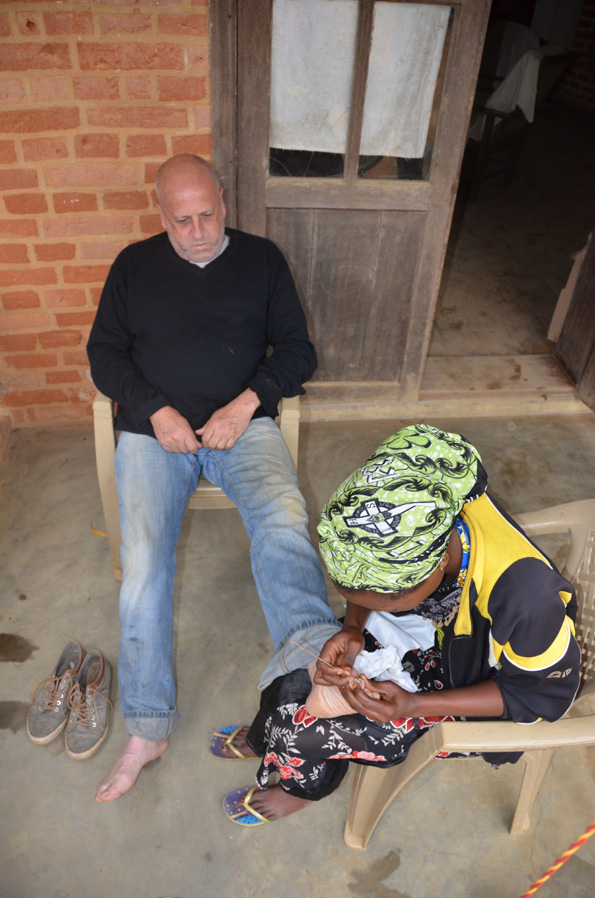
August 8, BC: "Chique" extraction from the feet of Bernard Clist (one in each foot) at
Kinkenge mission lodge; operation sucessfully conducted.
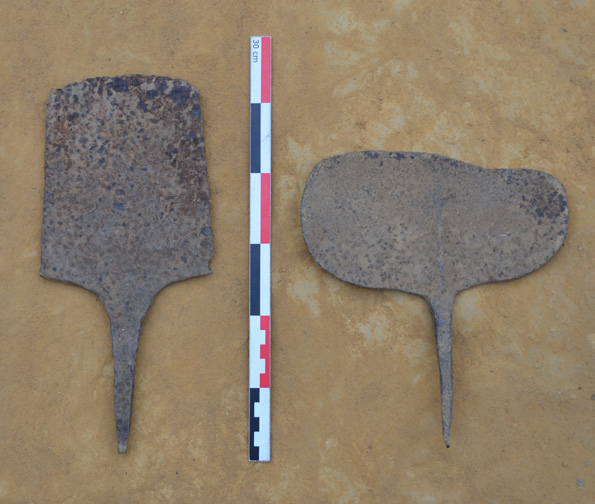
August 8, BC: Landa Ndibu village: picture of the two iron hoes kept by the woman, made
in a village near the Congo Republic border some kilometers to the north.
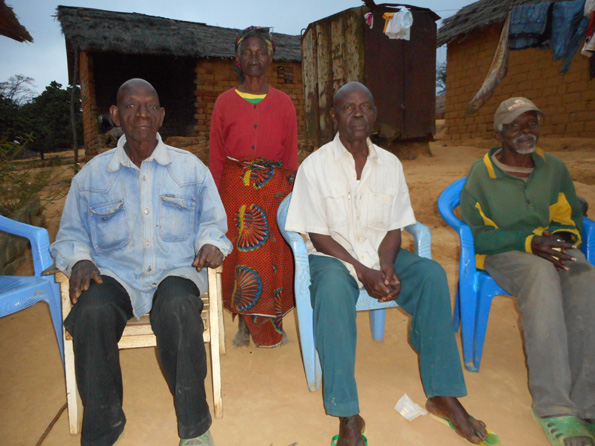
August 8, BC: Interview of 4 villagers at the Landa Ndibu village near to Kimbala Zolele
on the main Luozi to Tshela road. Themes discussed: ancient iron metallurgy and pottery
making. The three men were born in 1934 and 1937, while the woman was born in around
1935.
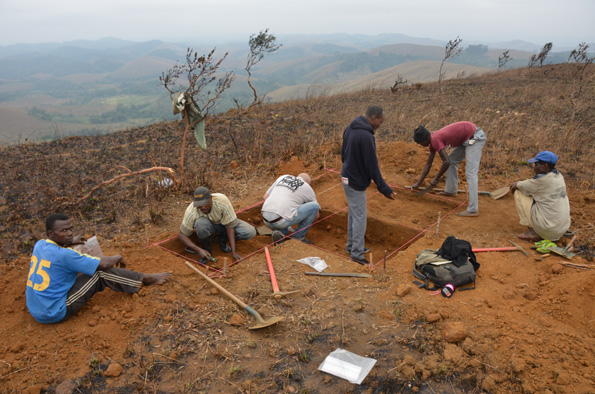
August 6-9, BC: Trench 9 is opened only a few meters from the old M. Bequaert's
excavations of 1951. The 1 square meter test trench will be expaned up to 15 square meters.
A very nice Kay Ladio Group pit is followed in 5 of the squares, and a high density of Kay
Ladio sherds are found buried at -20 centimeters; wood charcoal, carbonized palm and
"mbidi" nuts (Safou ?) are sampled in a very good context.
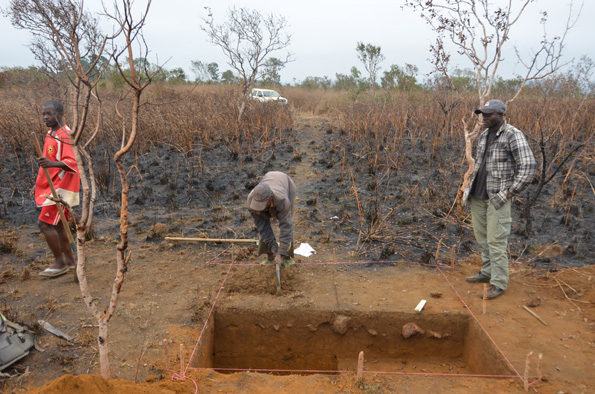
August 6-7, BC: View of trench 8 where a Late Iron Age level (see stone alignment) is
followed with 4 square meters excavated.
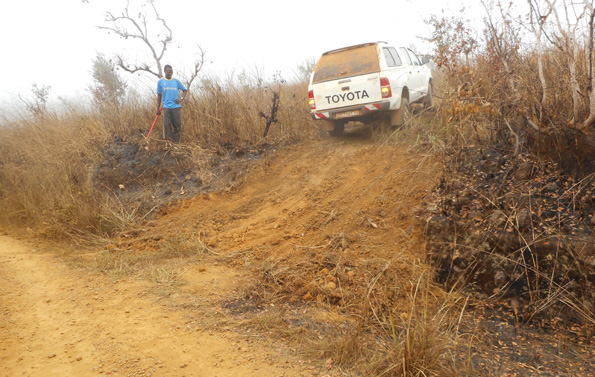
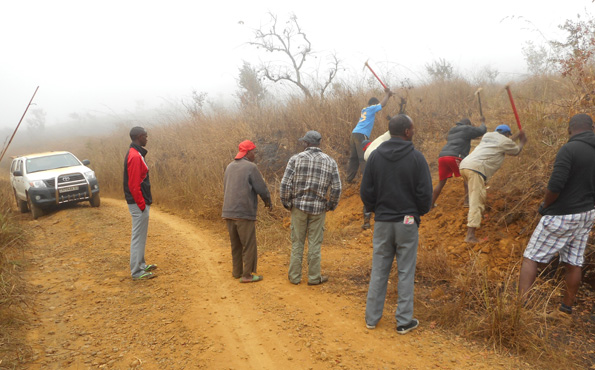
August 6, BC: Decision is taken to make a little "salongo", though on a Friday: we need the
vehicle up to the Kindu 2 hilltop a faster way, i.e. to ease the slope gradient between the
main track and our little path to the hilltop. Two views: during the "salongo" and after.
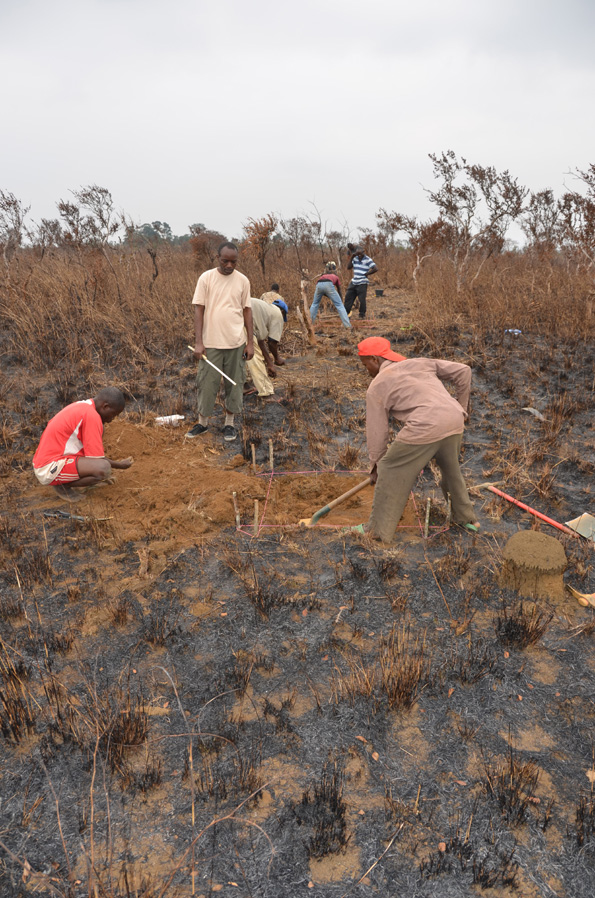
August 5, BC: At Kindu 2, in the afternoon, after stopping work on Mantsetsi hill in the
morning. The objective here was to identify Kay Ladio Group material, date it by
radiocarbon, try to trace more recent Late Iron Age pottery found in 1951, and better
understand the Stone Age artefacts found there. Decision was taken to dig 8 test trenches at
10 and 30 meters intervals oriented north-south from the southernmost of M. Bequaert's
trenches. Here work is in progress on trenches 5 and 6.
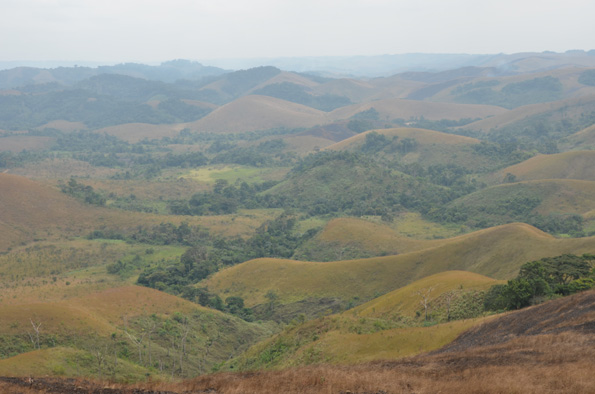
August 4, BC: At Kindu 2, general view of the countryside below the hilltop culminating at
800 meters above sea level.
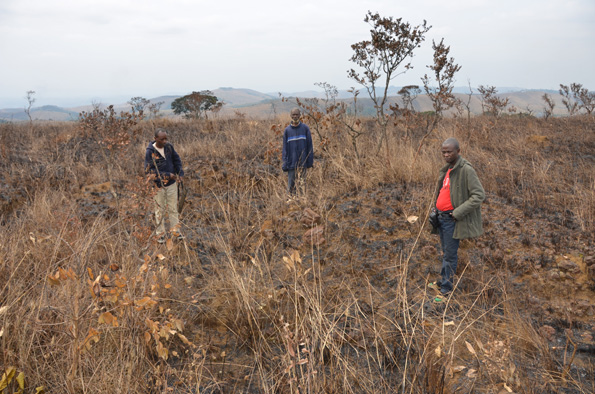
August 4, BC: At Kindu 2 in the afternoon, the other hilltop excavated by M. Bequaert in
1951 near to Kinkenge. The hill had already been burned down. Our three friends are
standing on top of some of the old trenches still noticeable today.
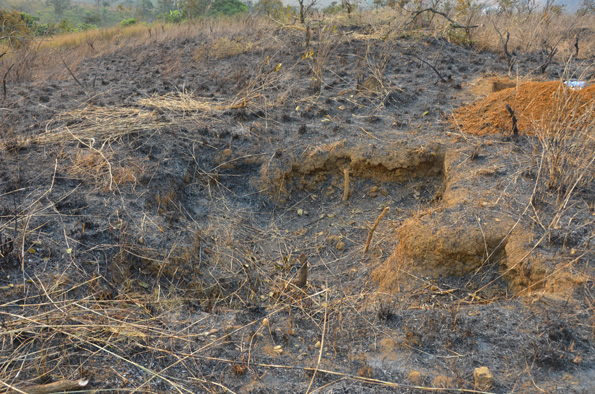
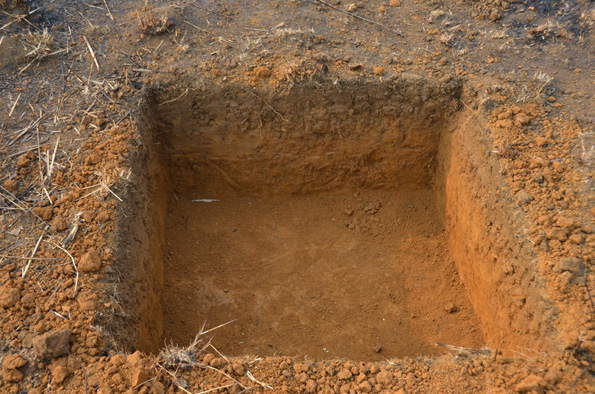
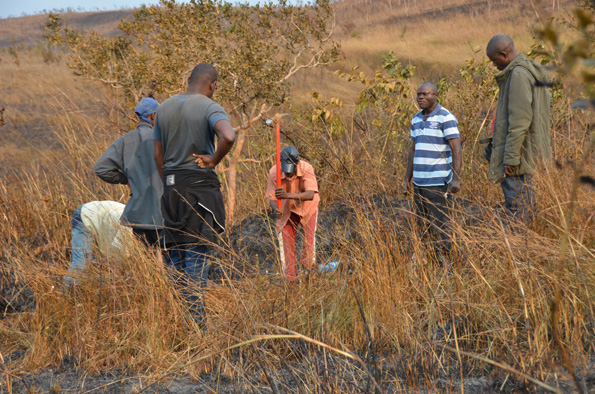
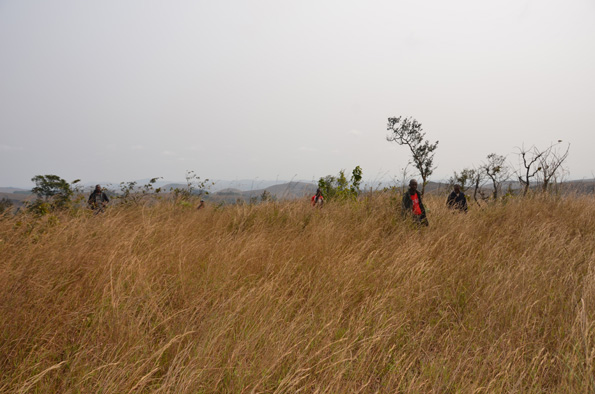
August 4, BC: At Mantsetsi, late in the morning. Four pictures showing a) how the hilltop
showed up on the first survey, b) how it was after burning down the grasses, c) one of our
test trenches being dug (first one of four), d) its end result: potsherds at the top, and quartz
debitage lower down.
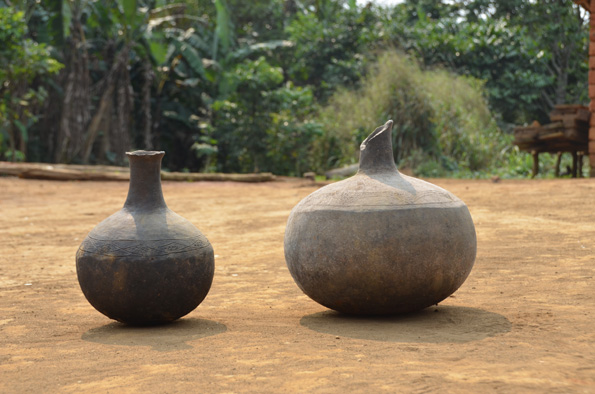
August 4, BC: At Kilolo Senga, part of the interview about ancient pottery making: two
pots from the 1930s - 1950s.
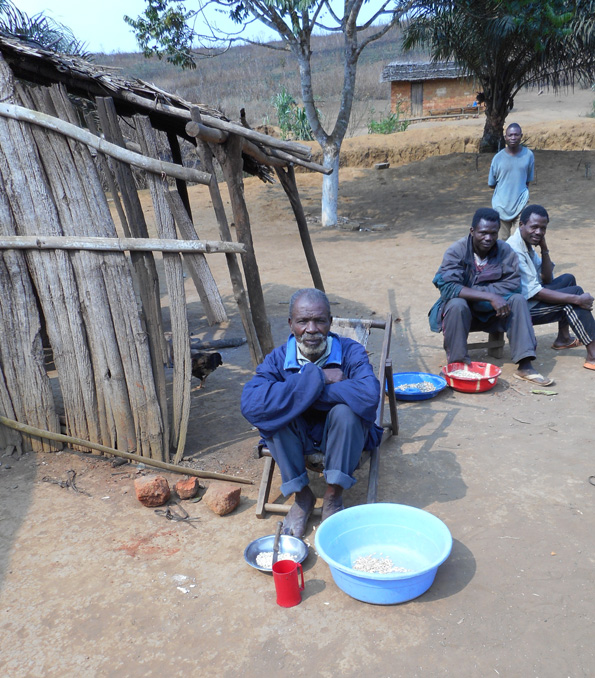
August 4, BC: At Kilolo Senga, interview of the eldest (born in 1938) to get information on
pottery making, iron working, and above all on the exact location of M. Bequaert's
excavations of 1951 on Mantsetsi hill. Our informer's mother was preparing meals for the
'mundele bibengele' (the "white man of the pieces").
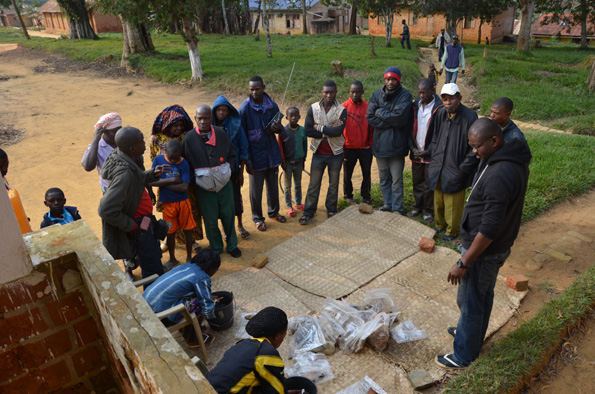
August 4, BC: 8 AM. Explanation for the two girls contracted to wash the archaeological
material how to do it. Of course people are flogging in to listen and look at the artefacts
drying.
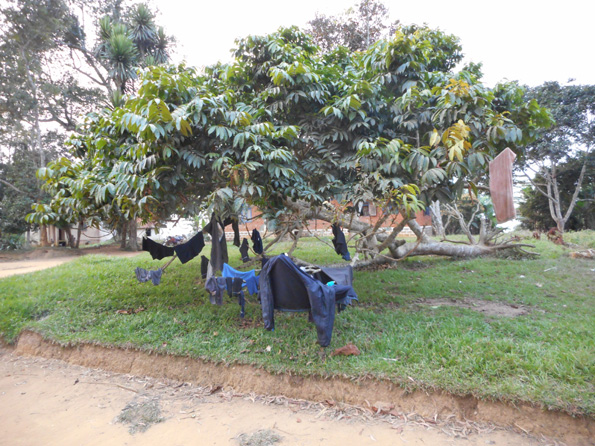
August 4, BC: The team's clothes drying where they can be spread out, e.g. a tree.
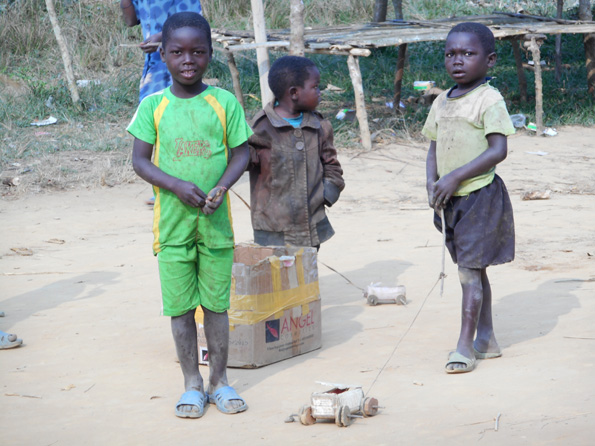
August 4, BC: Early in the morning around 7 AM, kids playing. Note their toys: a
cardboard box as a truck, and home made vehicles (wood and plastic) to play with.
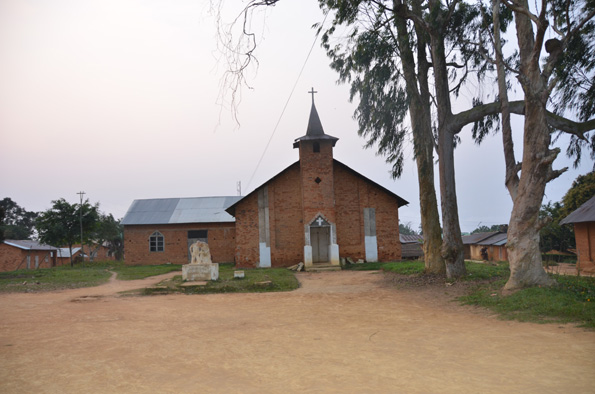
August 4, BC: The Kinkenge church, built in 1935.
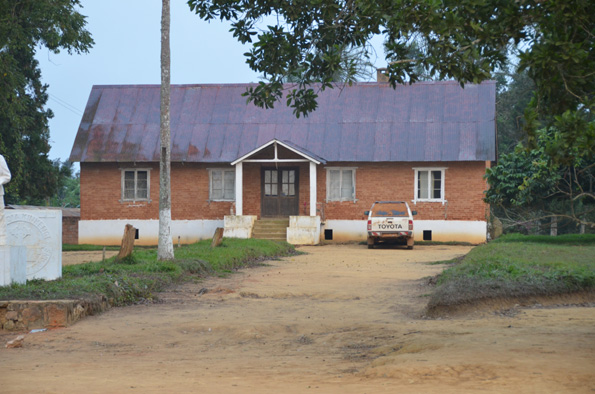
August 4, BC: At Kinkenge. We came in around 5.30 PM yesterday. This is the house we
are in. Nice !
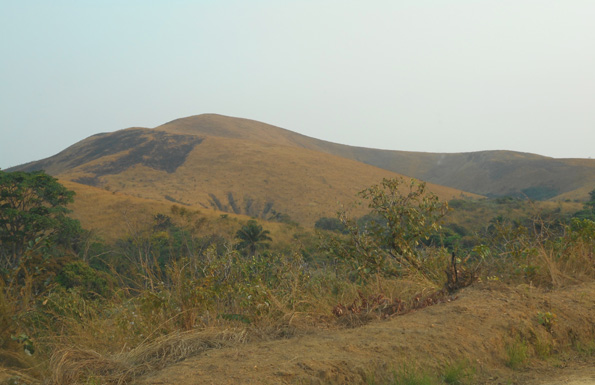
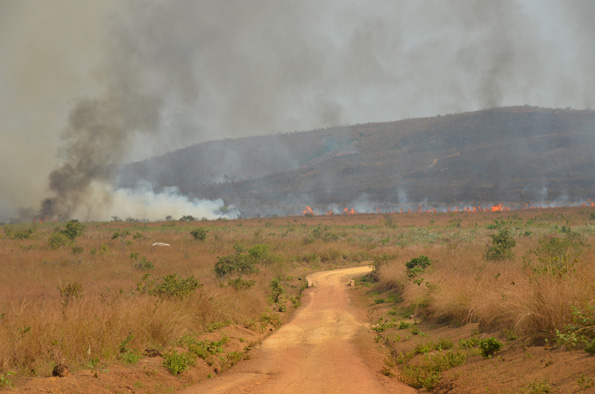
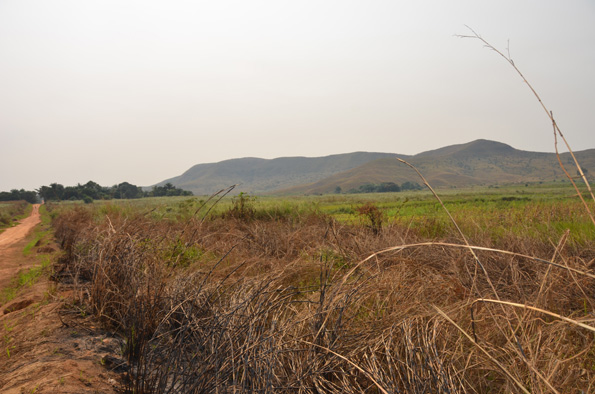
August 3, BC: A few pictures of the countryside between Luozi and Kinkenge: first two,
the Luozi plain before the Mayombe range, third, the Mayombe hills before Kinkenge which
lies on the eastern slopes.
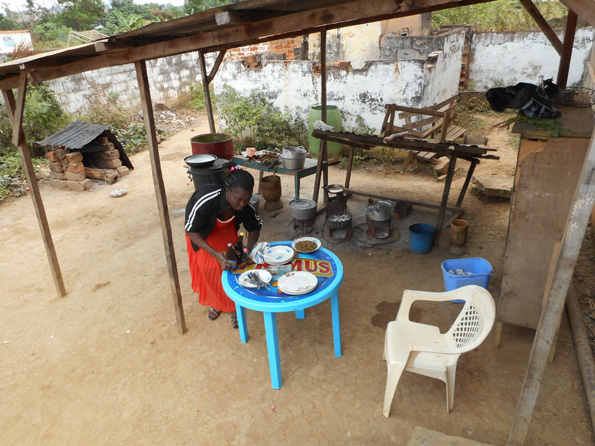
August 3, BC: After arrival in Luozi on the north bank of the Congo river, 11h30, we
decided to have lunch then move on to Kinkenge. Three hours and a half driving in the
morning (Kimpese-Luozi) and another estimated four hours in the afternoon (Luozi -
Kinkenge) should do the trick. So, a meal at Madou's: this is her kitchen.
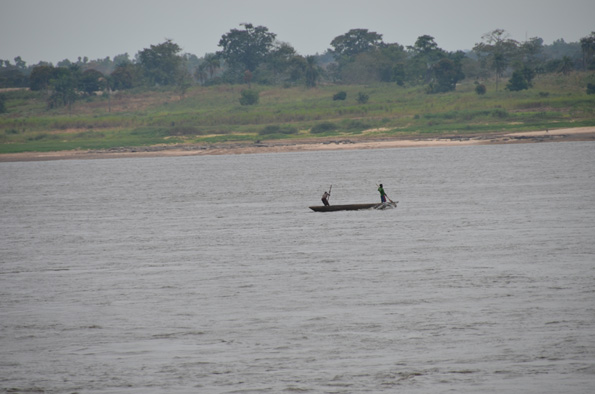
August 3, BC: Fishermen on the Congo river.
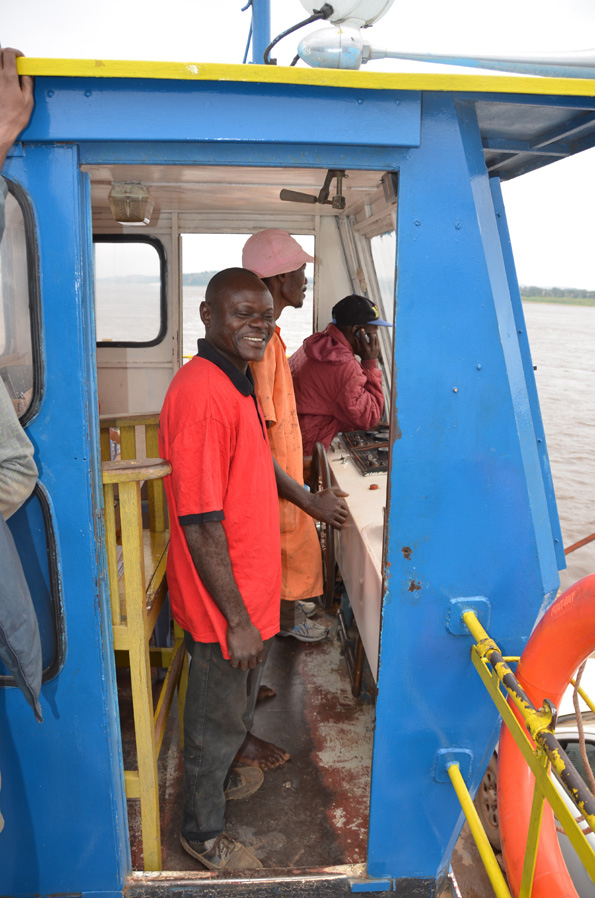
August 3, BC: Isidore, our driver, having a good laugh after he tried to convince the
helmsman to let him drive the ferry. Of ourse due to the regulations he could not.
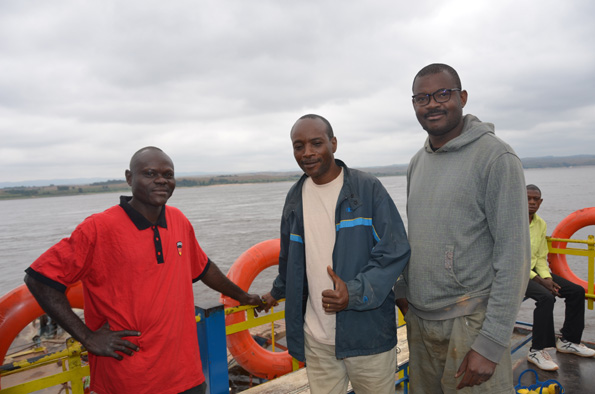
August 3, BC: Roger of the National Institute of Museums (center) taken care of by Isidore
(left) and Igor (right): he had never been over such a stretch of water before ! Slightly tense,
he was...
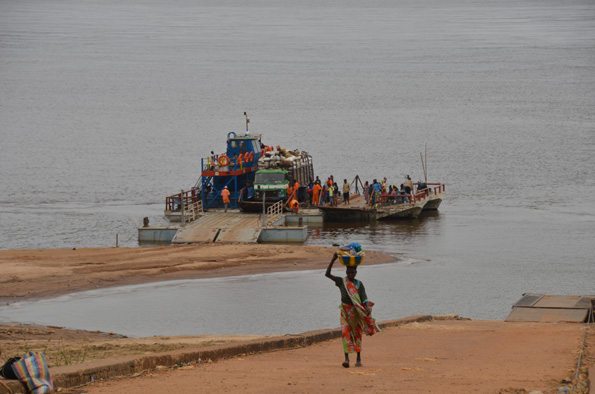
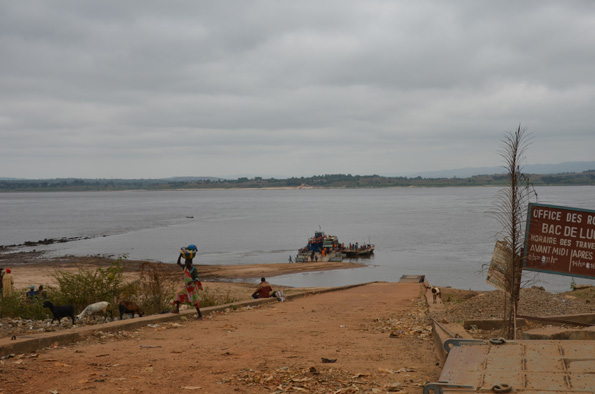
August 3, BC: At the Luozi ferry. 11 AM. A stroke of luck: coming onto the embankment,
the ferry was also coming in and fast unloading the only vehicle on it and its small group of
foot passengers. Meaning fast onboard and crossing over.
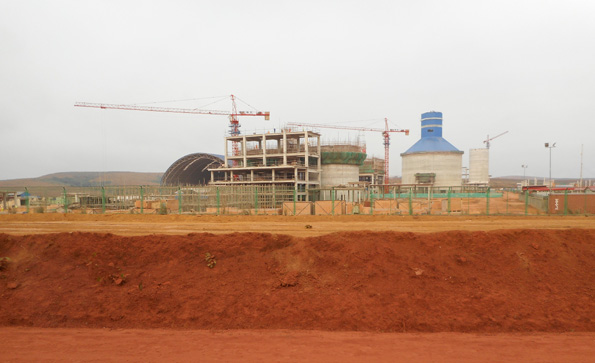
August 3, BC: The new cement factory a few kilometers on the Kimpese - Luozi road.
Built by the Chinese. Quite a huge business, this one !
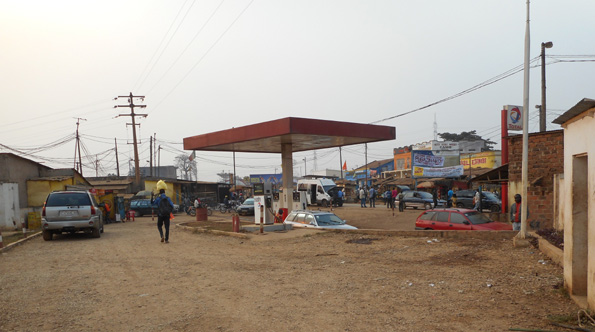
August 2, BC: Arrival in Kimpese around 2 PM. Finding somewhere to eat, then buy our
phone credits, and purchase the last pieces of foodstuff for the trip to Luozi then Kinkenge
north of the Congo river. Last but not least, going downtown in Kimpese (?) to find a small
hotel: the Dolbi Hotel. The picture was taken on August 3 at 7h30 after refuelling at one of
the few petrol stations in Kimpese, on the road to Luozi.
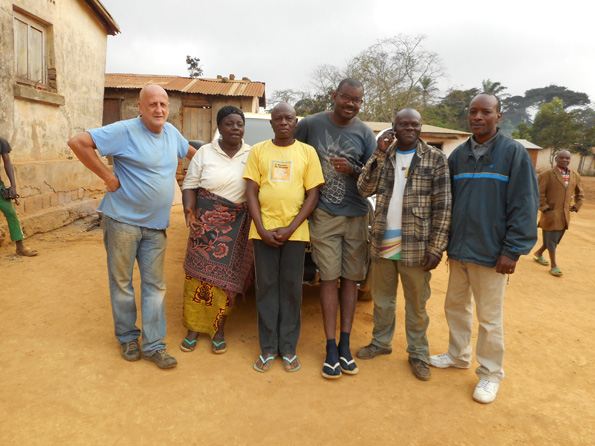
August 2, BC: Leaving this morning Mbanza Manteke for Kimpese (9 AM). Left to right:
Bernard Clist (after 2 days sick), the 'Chef de Secteur' and his wife, Igor Matonda, Isidore
and Roger (National Institute of Museums).
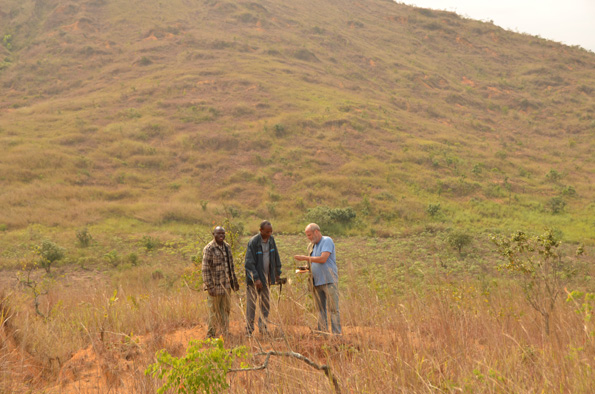
August 1, BC: Surveys on the Bu 3 site opposite Mbanza Manteke.
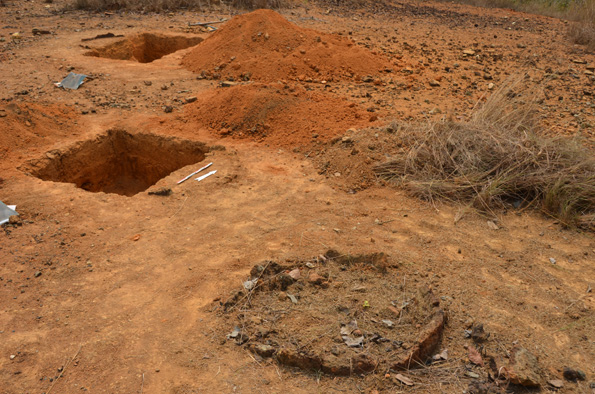
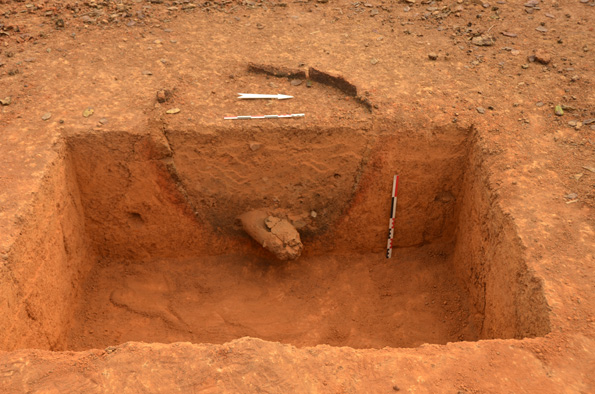
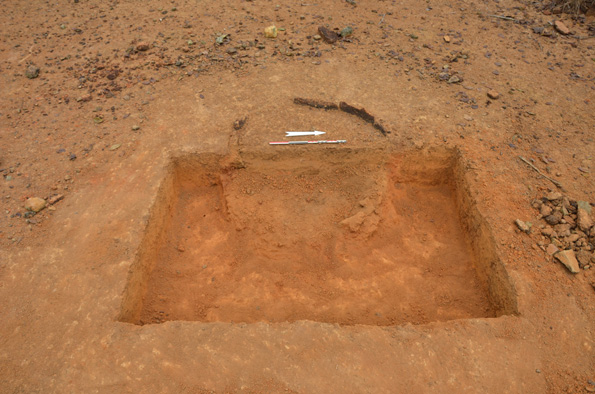
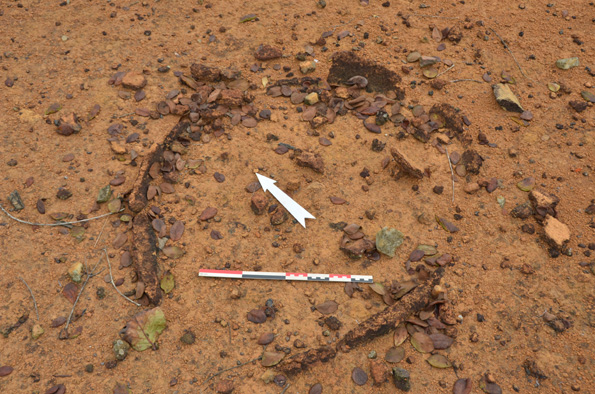
July 31, BC: Excavations of iron smelting furnaces at Kazu 6. The 4 following pitures.
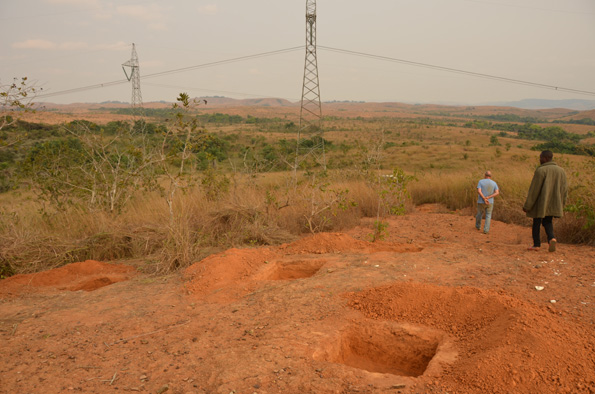
July 31, BC: Excavations at the Kazu 4 site, Early and Later Iron Age components.
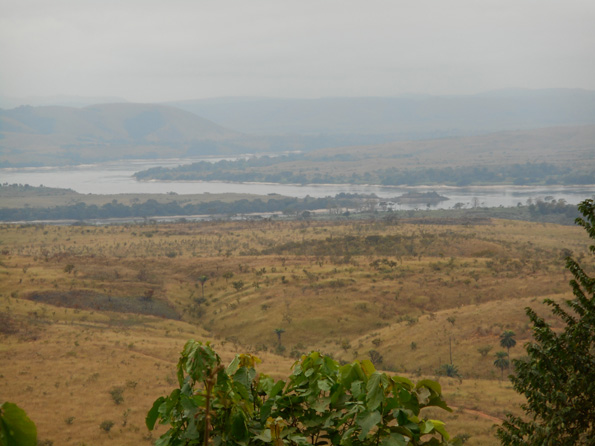
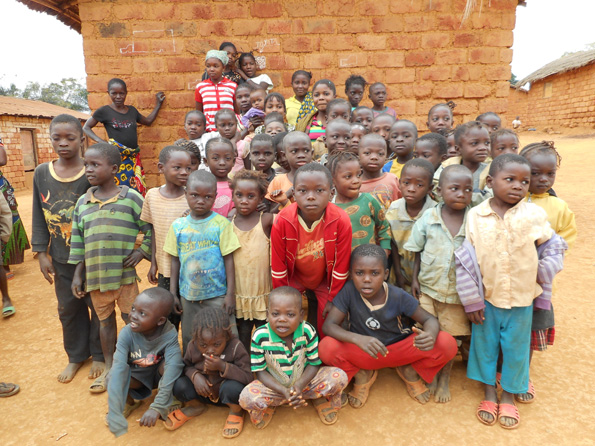
July 28, BC: Visiting the Kulu village a few kilometres from the Congo river (see picture
of river bend from the Kulu hilltop). Kay Ladio type pottery in pits we will not be allowed
to excavate in the village, though the children are happy to see us (or a camera ?).
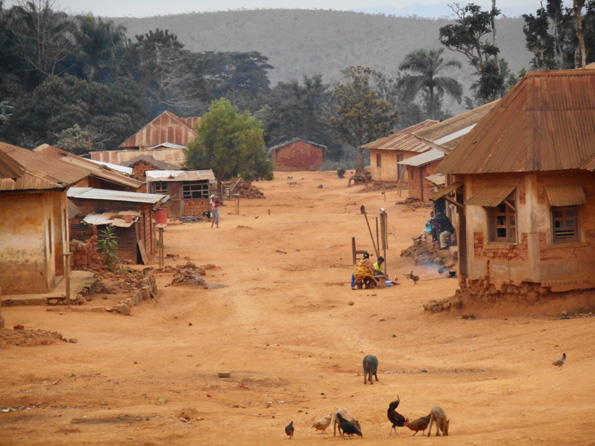
July 27, BC: Arriving in the afternoon at Mbanza Manteke. A view of the village layout.
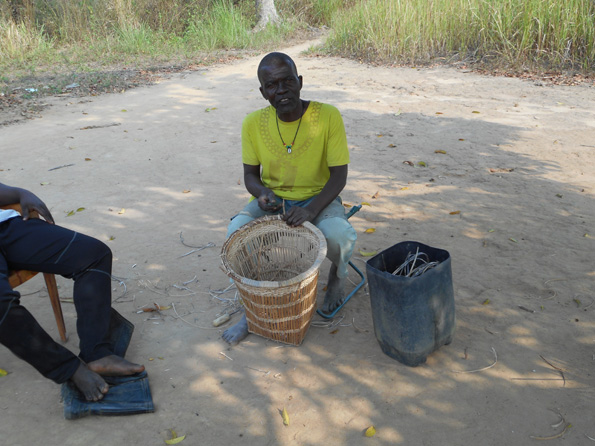
July 25, BC: Visiting the Ngongo Mbata chief at his village, to prepare for the base camp to
be set up there in September. He is making a basket.
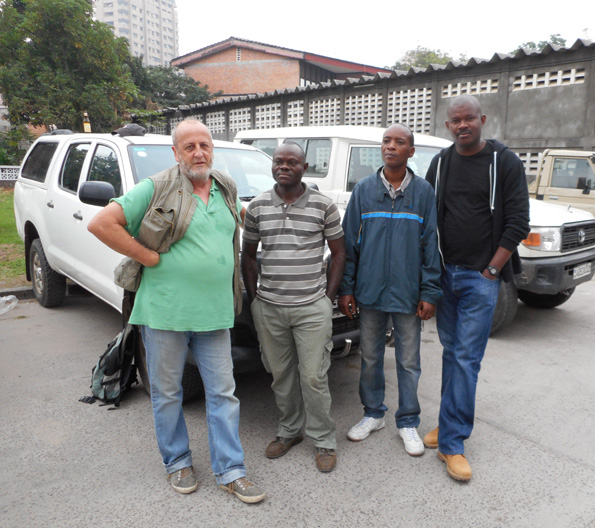
July 24, BC: On the go for the July 24 - August 18 period. Ready to move from the Procure
Sainte Anne towards Kisantu then Kimpangu. We will set up our equipment at Kimpangu
for the end of August / September excavations there, before moving to Mbanza Manteke on
Sunday morning. From left to right: Bernard Clist, Isidore Nkanu Tsasa (driver), Roger
Kidebua (National Institute of Museums, DRC), and Igor Matonda (PhD student).
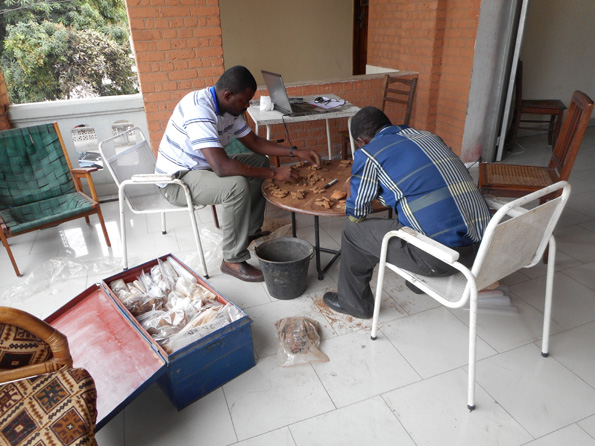
July 18-20, BC: 2 days and a half to catalog all the finds and the charcoal samples from the
Mbanza Mpangu and Mbanza Nsundi areas. Finished at 4 PM today. Left is Igor Matonda
(PhD student), right Alphonse Nkanza Lutayi (National Institute of Museums, DRC).
Tomorrow, review by BC of the budget and supervising the work on the truck (at least one
new tyre and the 4 car kneecaps), while EC finishes her work started late in June at the
Kinshasa University archaeology museum. Rest of the team: free time ... except for Mandela
Kaumba, another PhD student, working in and around Tshela to document traditional pottery
making in the villages.

July 17, BC: Back at the 'Procure Sainte Anne' late at 8 PM this Friday.
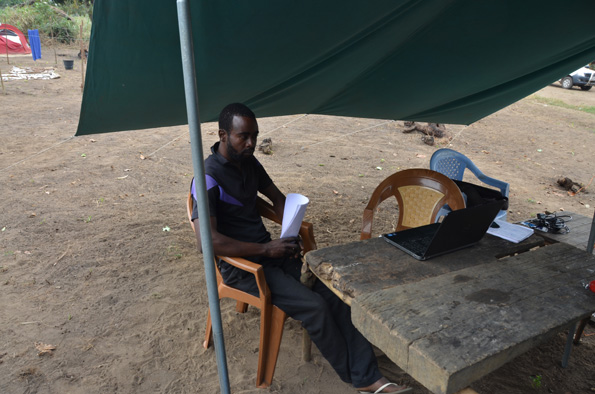
July 16, IM: Igor Matonda conducting at Kindoki base camp an interview with a villager
speaking a kikongo variant possibly as yet unrecorded. The rest of the team is packing up or
conducting the last excavations before moving on to Kinshasa.
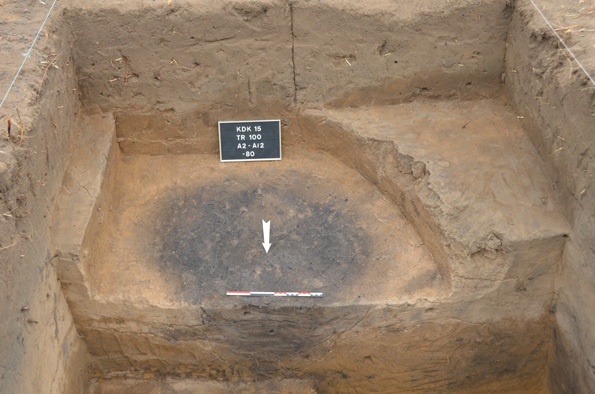
July 16, BC: Excavation in progress of pit 1 of Trench 100 on the Songololo village lands.
Due to the material found (pottery, smoking pipes, ...) this is probably a 17-18th century
feature with very interesting new pottery styles in it.
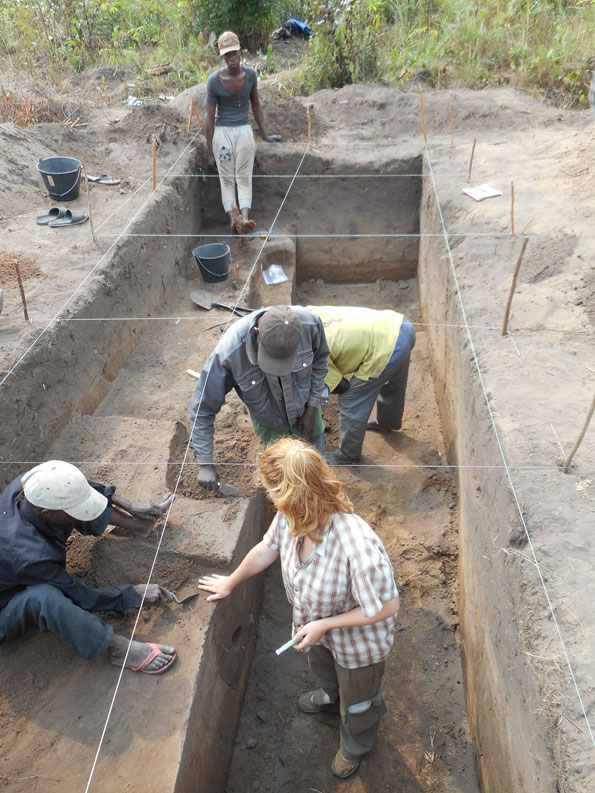
July 15, EC: Expanding on the Kindoki hilltop from the test pits of July 11. Els Cranshof
leading the final moments of excavating two of the 5 pits found there (presumably 17th
century).
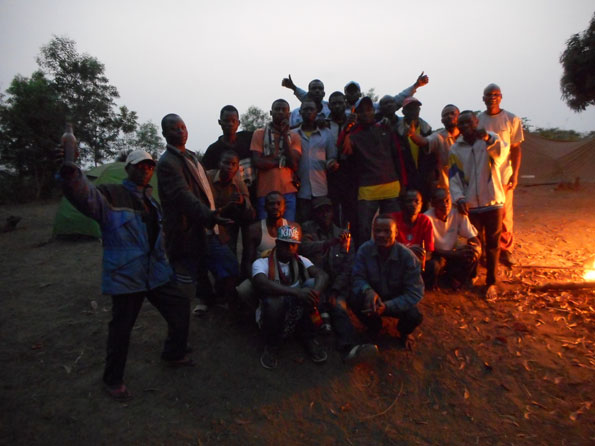
July 14, BC: At dusk, all the field crew lighted by the fire put to a tree; we could not find
any fireworks in Kisantu, so we (I ?) decided to sacrifice a dead tree near to our tents.
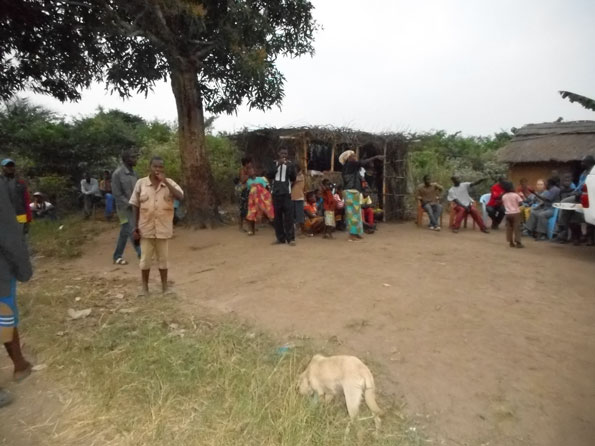
July 14, BC: Yep. French national day, and we did our fieldwork. But this means I had to
set up a small happening at the village later in the afternoon. Thirty-two meals were
prepared by our cooks: fried fish, chikwangue, beer or 'sucré'. This also served as an end of
work meal for the team as we were closing down for Friday 17 July.
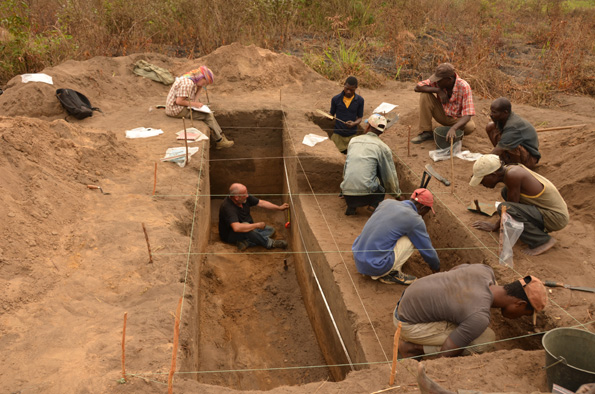
July 13, BC: 50% done. Let us record the profile before killing the trench ! At the top of
Kindoki hill quite a lot of features found: while Bernard Clist gives out the position of layers
and arte- and ecofacts, Els Cranshof does her Modigliani on paper. The profile being
recorded has two medium sized pits while a third and small one is beyond Bernard in the
west cut and a fourth and last one behind him.
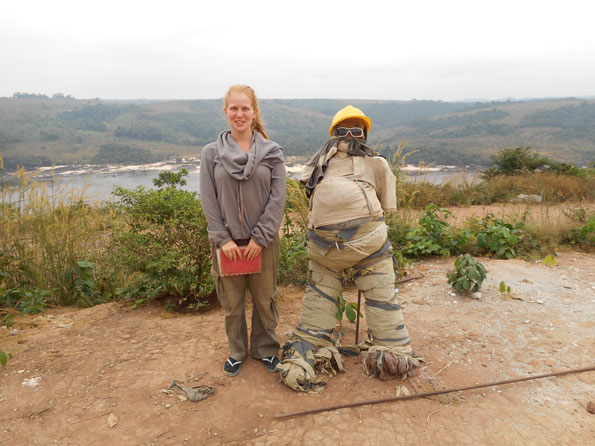
July 12, BC: Survey between Mbanza Nsundi and Zongo where the Inkisi river flows into
the Congo river. Quite a few Stone Age sites found in the savannas before coming to the last
5 kilometers inside the Société nationale d'électricité (SNEL) concession of the Zongo dam.
End of the trip with the Congo river in the background and first hills of the neighbouring
Republic of Congo. EC next to a mannequin supposedly representing the local SNEL
engineer.
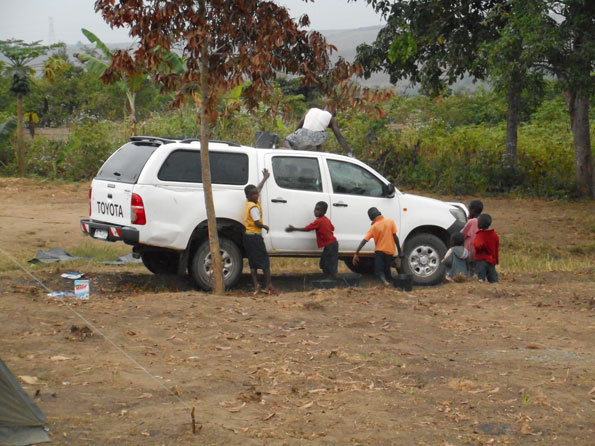
July 12, BC: Kindoki base camp, at the car wash before moving out on a survey between
Mbanza Nsundi and Zongo on the Congo river.
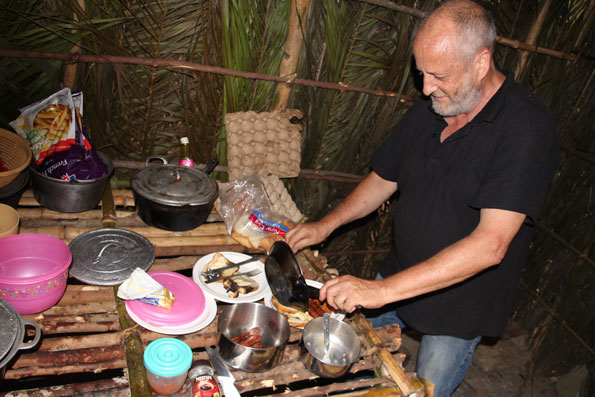
July 12, BC: I am preparing breakfast for the team members in our kitchen at Kindoki this
Sunday morning. English breakfast slightly congolized: scrambled eggs on toast, sausages,
red beans, and a few slices each of very good local flange to replace bacon ! Bags in the
background shows we had french fries and steack the previous evening...
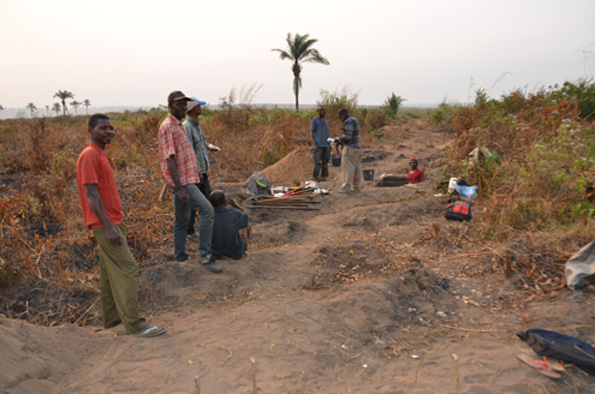
July 11, BC: At the top of the Kindoki hilltop another serie of test trenches are opened to
try to find the comb impressed ware in a good context (pit without any other pottery
production). A needle in a haystack maybe ?
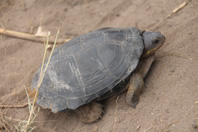
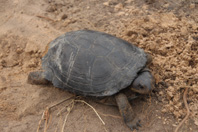
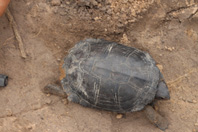
July 11, BC: A tortoise visits the excavations !
To be honest it was a small group of kids who had caught it in a river near to the Songololo village and had decided to sell it to the white people of Kindoki. Very good meat acording to everybody ! They were flabbergasted to hear the white guy in charge wanted to buy it back at 2,000 Congolese francs (which would have been a correct price for the meat) to be able to put it back in its local environment without thinking of eating it.
End of the story: a long walk to an unhabited stretch of the river to liberate the beast, and a very puzzled set of congolese workers who will tell the story in the coming years.
Ah! Yes ! The tortoise should be a Pelusios chapini according to what I see in Maran (J.), Olivier (S.) & Pauwels (S.G.), 2009, Nouvelles observations sur la distribution des tortues de la République du Congo (Chelonii : Pelomedusidae, Trionychidae et Testudinidae), in Chéloniens, 13.
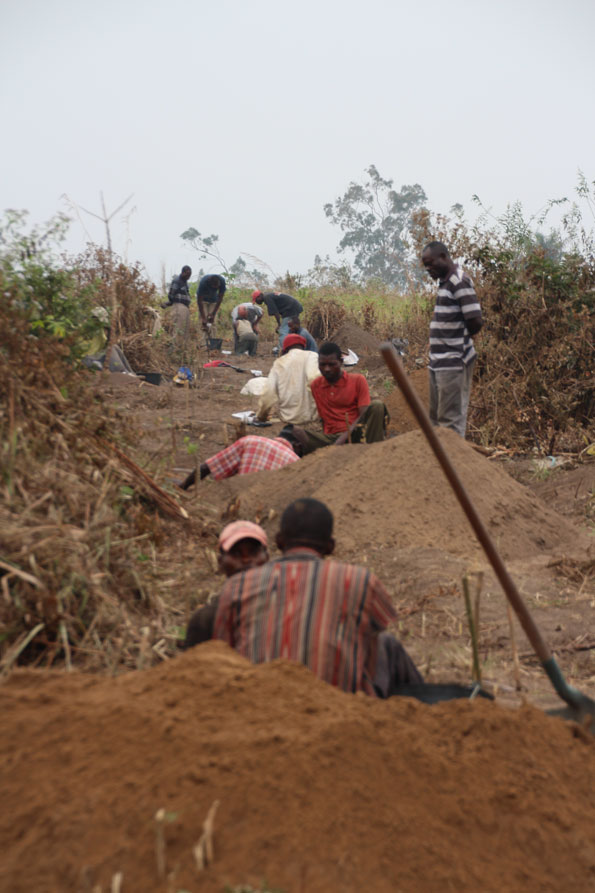
July 11, BC: Start of the excavations on the Kindoki hilltop. The first test trenches set up at
10 meters intervals on the 2013 layon where comb impressed concentrations had been
recorded.
The 2015 strategy was to find in a good context comb impressed ware dated for the time
being to the 14th century AD, i.e. a pre-contact period perhaps giving some clues to explain
the origins of the Kongo kingdom, and checking the internal position of Kindoki hill within
the Mbanza of Nsundi province.
It was decided to open new trenches near to comb impressed pottery found during the 2013
excavations, and around Kindoki where no work had yet been carried out: Songololo village
lands and the low lying ground between the hilltop and the river to the south.
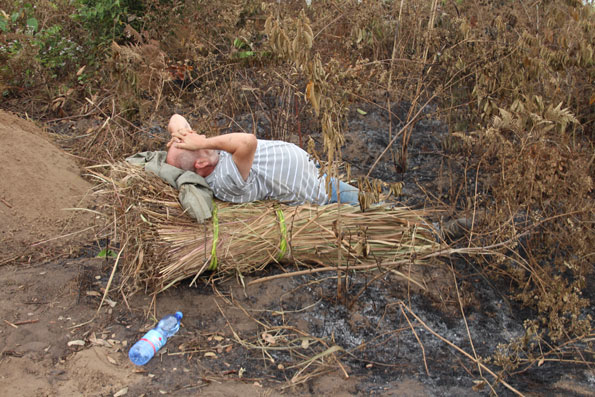
July 10, BC: Taking a break at midday on the summit of Kindoki hill and laying out the
strategy to test excavate the Songololo area of the hill. Note water bottle: nice and hot,
not too much shade, something like 3 liters a day to be drunk.
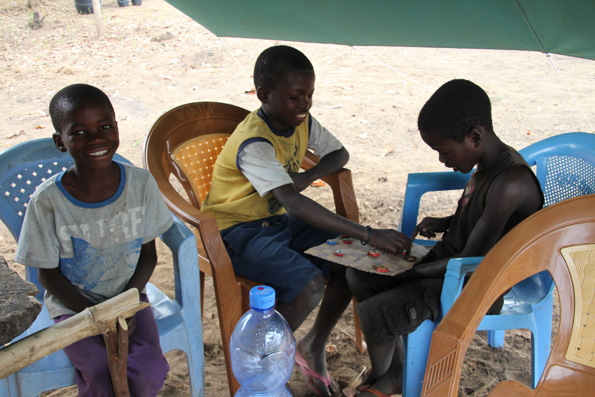
July 9, EC: Kids playing in our base camp living room. Being in the village, leads to strong
interactions with it.

July 7, EC: Close up of the viper. Which is identified as a Bitis gabonica rhinocerus
thanks to Dr. Harry W. Greene of Cornell University - USA).
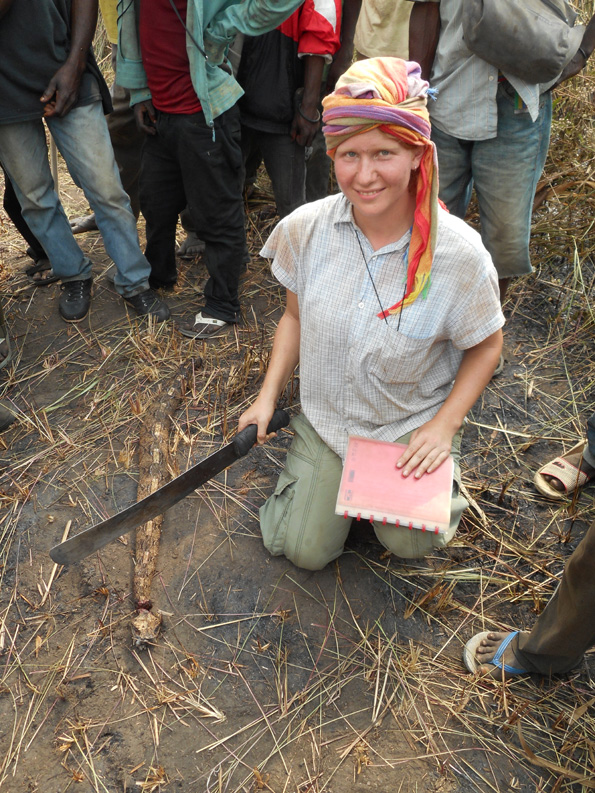
July 7, EC: After an encounter with a nice viper on Kindoki hill, while laying out layons to
uncover new data about the suposedly 14th century AD comb-impressed pottery. Els
Cranshof showing how to cut scientifically its head.
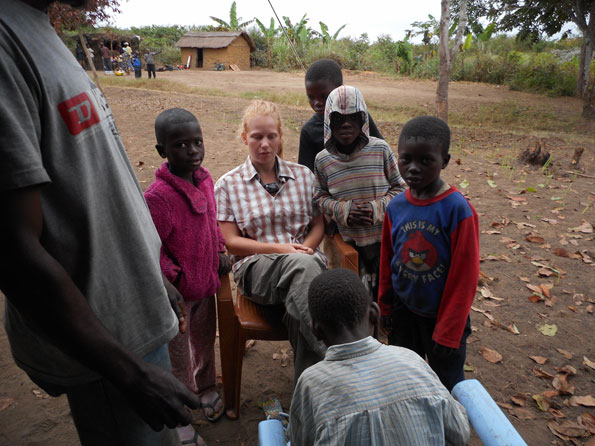
July 6, EC: Leaving Mbanza Mpangu for the Kindoki base camp, Els Cranshof is assisted
by the Kindoki kids to remove from her foot two 'chiques' who hitch-hiked a ride from
Mbanza Mpangu.
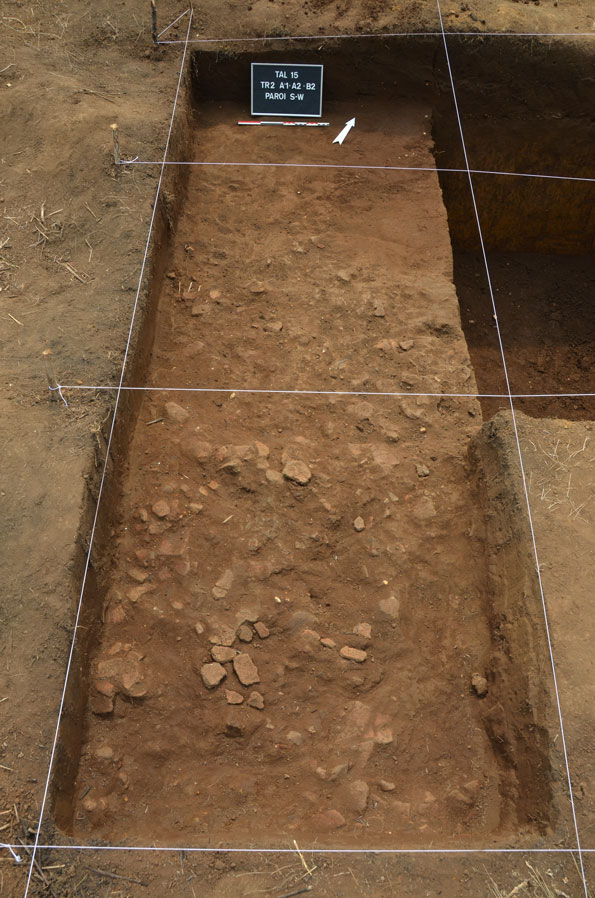
July 4, EC & BC: Detail of the Kitala site stripping on 3 square meters in Trench 2 to
understand the integrity of the archaeological layer. All the potsherds are of Kay Ladio
Group type (Early Iron Age).
Preliminary aerial and satellite pictures analysis had permitted Eva Vergaert to suggest
potential archaeological sites and a topographical map which was not available for this
specific area. Surveys have suggested the sites since the Early Iron Age (e.g. Kitala) are
rather located along the Bombe river stream on the first small hilltops bordering on the west
and the east the river valley which links up with the Kwilu river nearby. Old villages from
the Early Iron Age to the 19th century have thus been identified, without of course getting
the full picture. This second fieldwork period (following on the 2014 one) suggests a
Bombe River Project holds a very exciting potential for landscape archaeology through the
Iron Age. Positive feedback from the JVL company directors show their facilities at Yabi
can be used. Already, preliminary contacts have led the KongoKing project to leave basic
field equipment there to help the company's personnel collect artefacts in the valley using
the JVL's GPS field equipment, improving our archaelogical map.
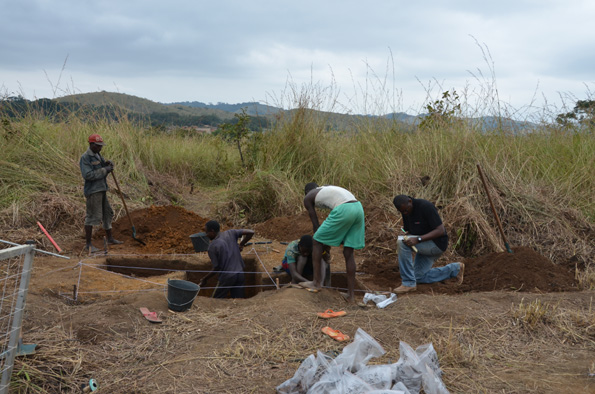
July 4, EC: View of the vegetation cover on the Kitala site and ongoing excavation of
Trench 2. Igor Matonda (PhD student) supervising here.
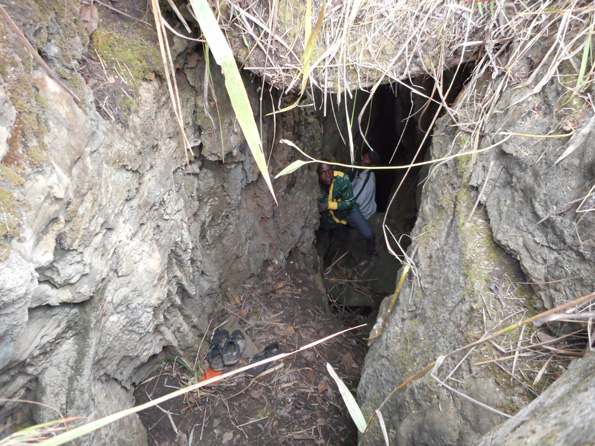
July 2, BC: Survey to discover rock galleries on the east bank of the Bombe river near to
Mbanza Mpangu
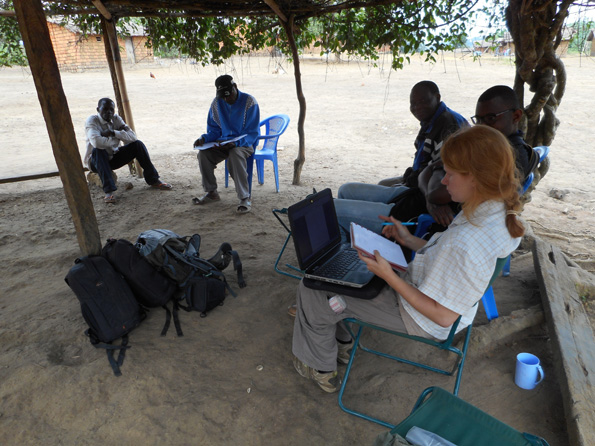
July 2, EC: Comparing the 2014 field notes, use of the laptop in front of the village chief
house. Following on a small 3 hours 'palabre' to get traditional authorization from the 4
lineages involved to excavate in the countryside.
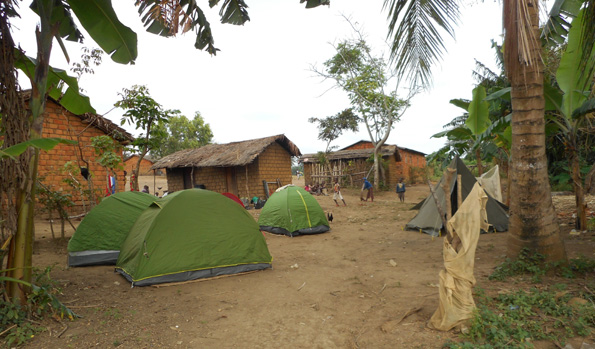
July 1, BC: At Mbanza Mpangu, the camp is set up in the village.
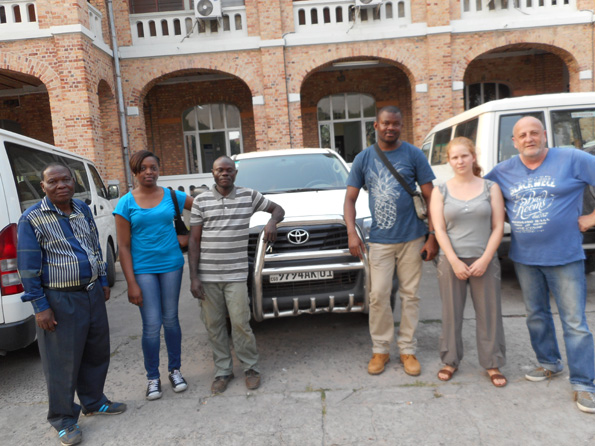
June 29: At the Procure Sainte Anne, Kinshasa. Group photo before departure for 3 weeks
fieldwork (first part of 3 months).
From left to right: Alphonse Nkanza Lutayi (National Institute of Museums - DRC),
Mandela Kaumba (Lubumbashi university - DRC & PhD student at Gent / Brussels
universities - Belgium), Isidore (driver, KongoKing project at Gent university - Belgium),
Igor Matonda (PhD student, Kinshasa university - DRC & Gent / Brussels universities -
Belgium), Els Cranshof (PhD student, Gent / Brussels universities - Belgium), Bernard Clist
(mission supervisor, Gent university - Belgium).
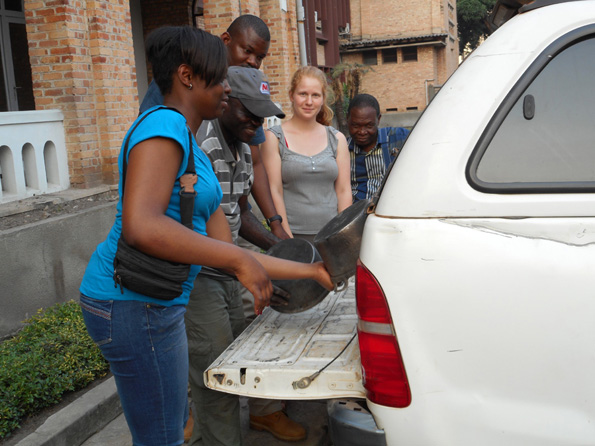
June 29: At the Procure Sainte Anne, Kinshasa. Last bolts being pushed in before departure
for 3 weeks fieldwork (first part of 3 months).
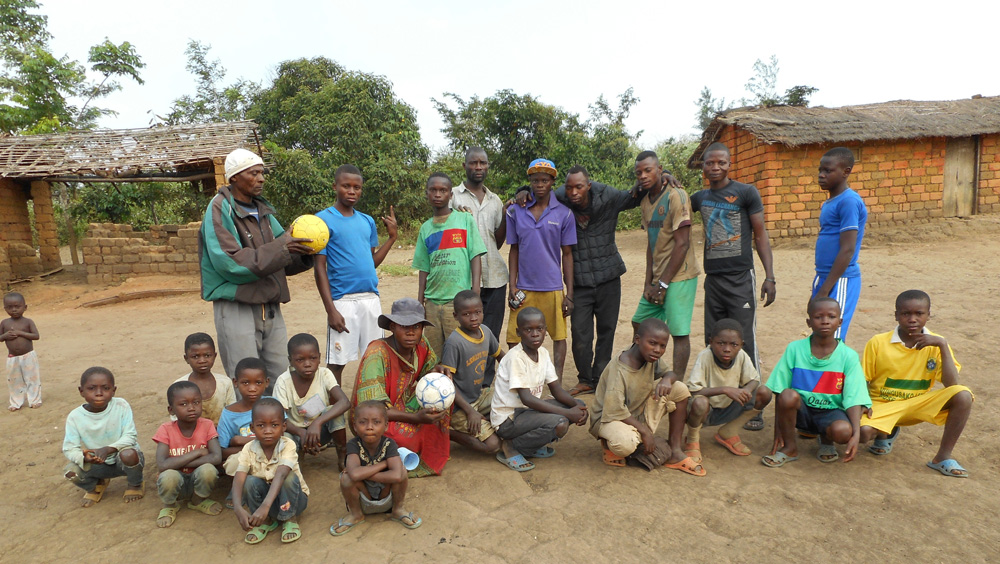
June 25, BC: At Mbanza Mpangu, 2 hours drive to the south of the RN1. Picture taken
after the one hour "palabre" (fast !) to get authorization for the control excavations there in
a few days. When everything has been put straight, official ceremony of handing over of
two footballs for the village team. The village chief is happy with his yellow ball. At
Mbanza Mpangu we should find 16th-18th centuries evidence and an Early Iron Age site
dated for the time being to 1,600 and 2,000 BP.
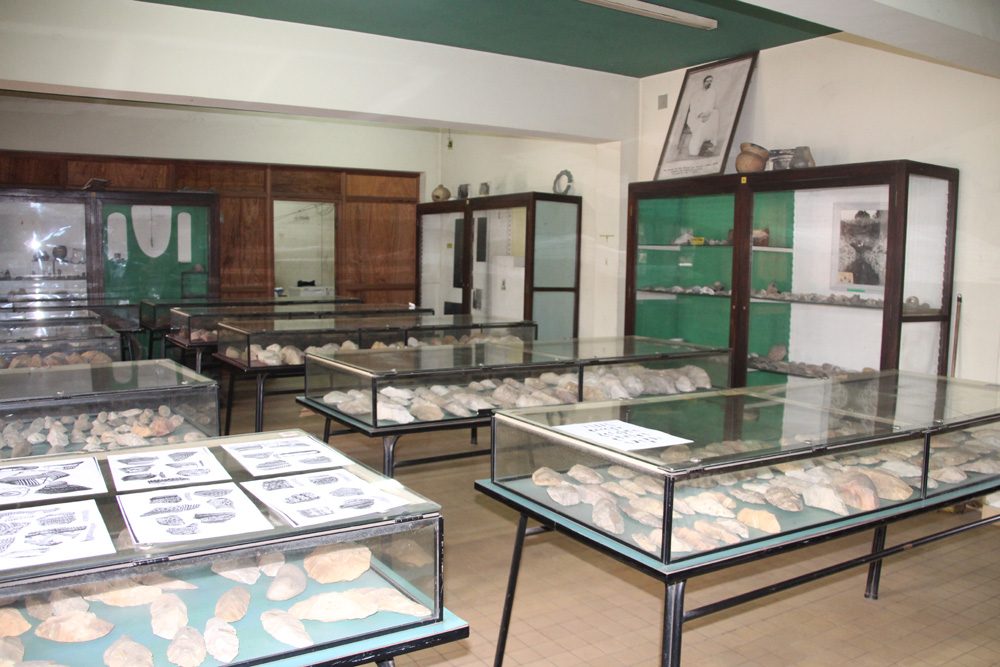
June 25, EC: This is what a museum looked like in the 1960s, and it still is in modern day
Congo ! I made good progress during my 3 days work. I still have to find a couple more
days to finish up.
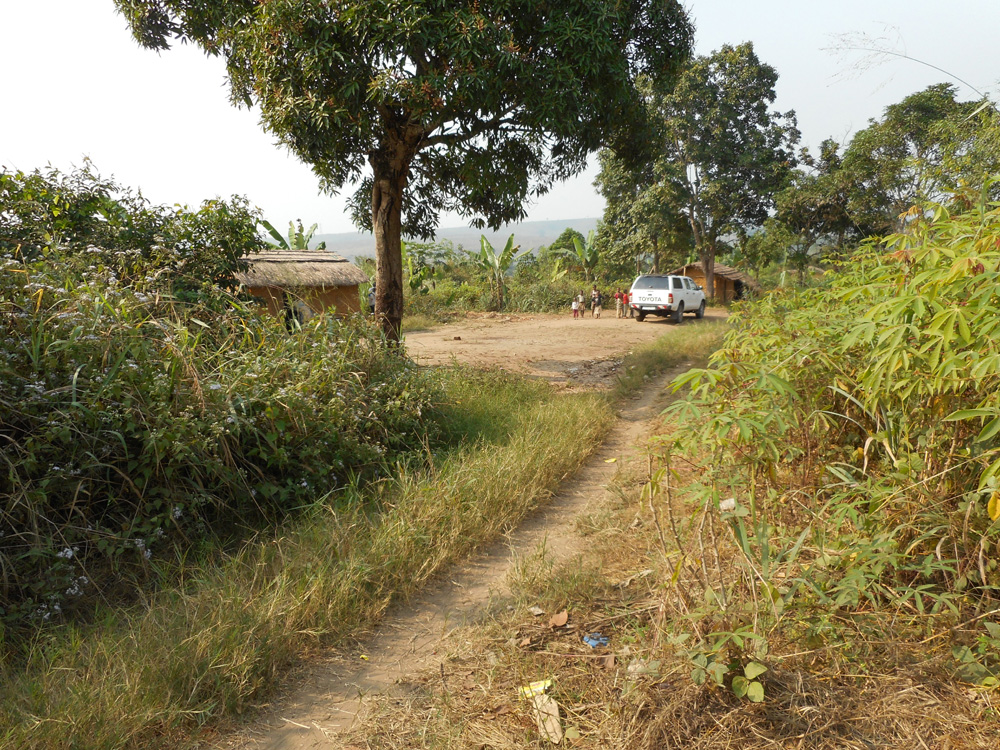
June 24, BC: At Mbanza Nsundi and Kindoki, north of Kisantu. I needed 3 hours to cover
all aspects: agreement for the setting up of our base camp (again in Kindoki village, see
picture attached), the workers (20 to start off), their salary (due to the 'conjoncture' up to
6.5 USD a day), the employment of 2 cooks, 2 water carriers, and 2 artefacts washing girls.
We were handicapped in 2014 to get authorizations from the chiefs because of a land
property case opposing a group of villagers to them. They were accused, amongst other
things, of letting 'white men' unearth their ancestors and letting the corpses unattended for.
The legal suit was dropped after that group attacked 3 policemen who killed one and
severely injured another villager.
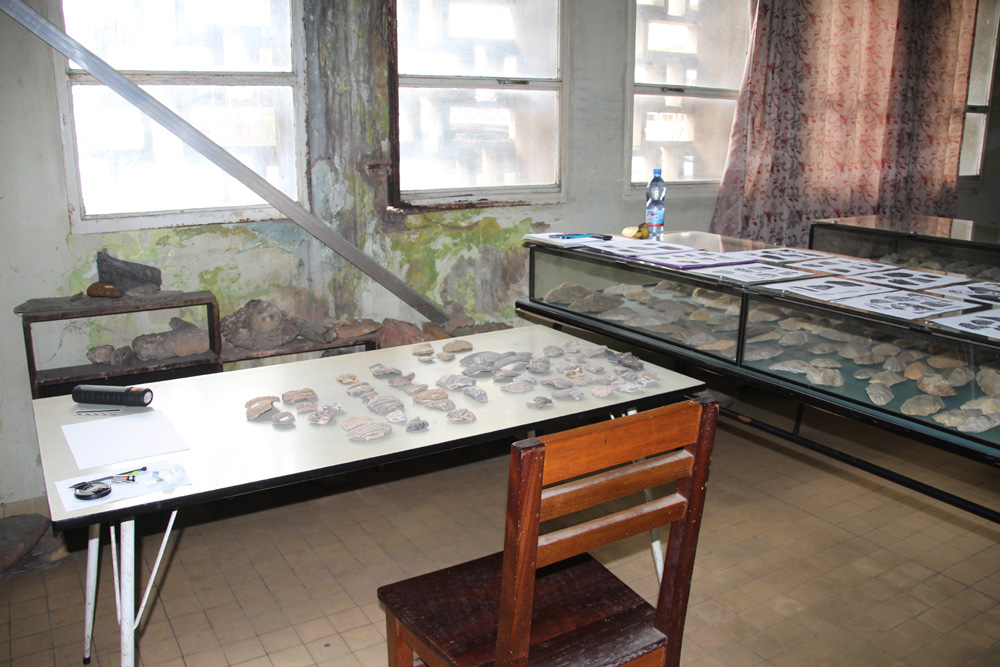
June 24, EC: At the archaeology museum of Kinshasa University, improvising my photo
studio using a huge spotlight (i.e. my flashlight). Ongoing study of the potsherds found by
H. Van Moorsel at Kingabwa back in the 1960s.
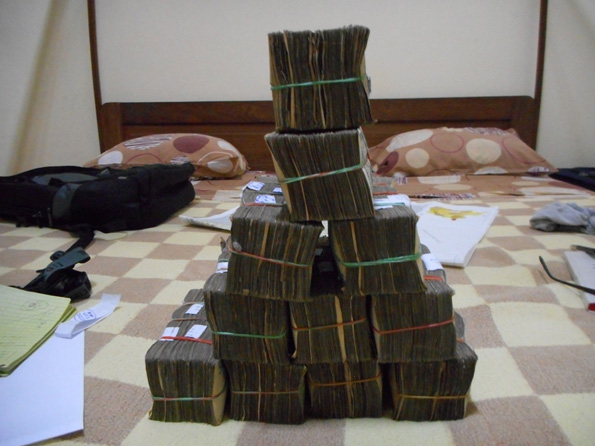
June 23, BC: Ah ! I have my first 4 weeks field budget, from USDs to Congo Francs. Each
'briques' here is 250,000 FC (made up of 500 FC banknotes, good to use in the villages),
i.e. roughly some 250 USD. Thus the pile represents about 2,750 USD. Give me a bigger
wallet, please.
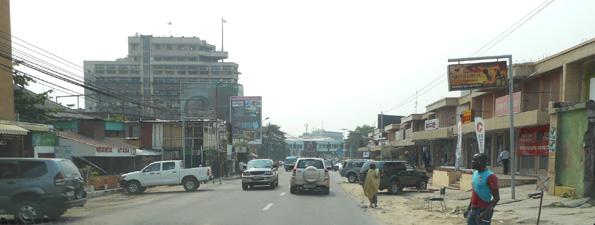
June 23, BC: Kinshasa today, coming back to the Procure after a trip to Beta Distribution
(our airfreight company, very good, we know them since 2012) with sport equipment for
the villages and of course field equipment.
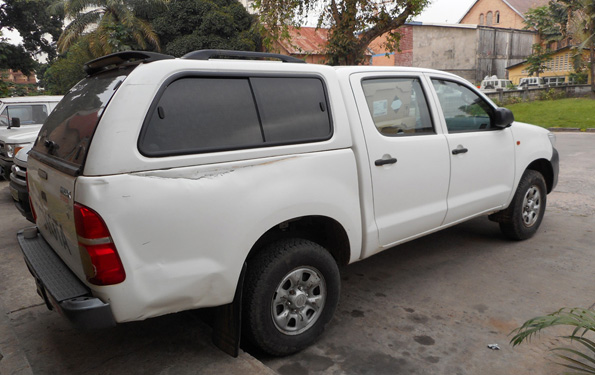
June 23, BC: Our Toyota ready to go for her first trip to Bas-Congo tomorrow 8 AM with
50% of our field equipment to be dropped at Kisantu, our forward logistics base (Sisters
compound at the Kisantu Hospital). Simple drive, me and our driver, to see the village
chiefs, get authorizations for sites accesses, and give out instructions to build our various
base camps for the coming 3 months. Some 1,000 km to drive in the coming 4 days,
estimated 18h driving during 3 days, and a full day for the usual village "palabres". Back
Saturday in Kinshasa. Meanwhile Els (Cranshof) will work at Kinshasa University's
Archaeology Museum from Wednesday to Friday on artefacts there, especially those of the
H. Van Moorsel's excavations at Kingabwa (Group X pottery).

June 20, BC: BC and EC set up in Kinshasa at the Procure Sainte Anne. For 80 USD/day,
double bedroom, air conditioning, electricity and water all day, Internet in the bedrooms
(obviously), breakfast / midday / evening meals, security in the large compound situated
a few hundred of meters from the old "Gare Centrale" in downtown Kinshasa. Negative
aspect: no tv in the bedrooms. That is a shame. ;-))